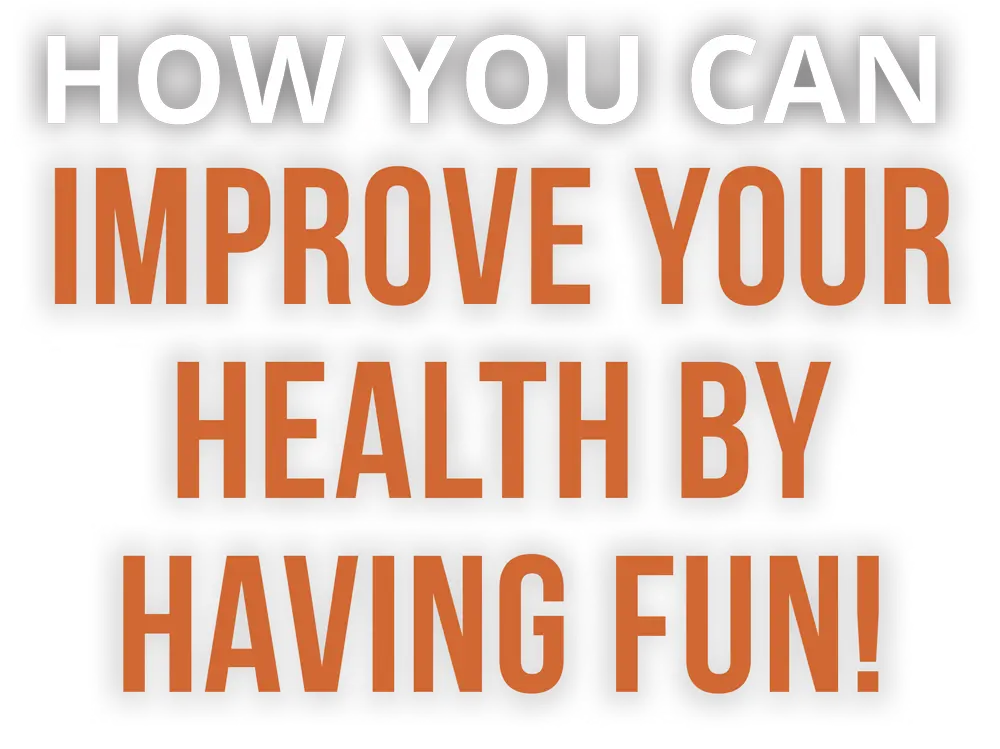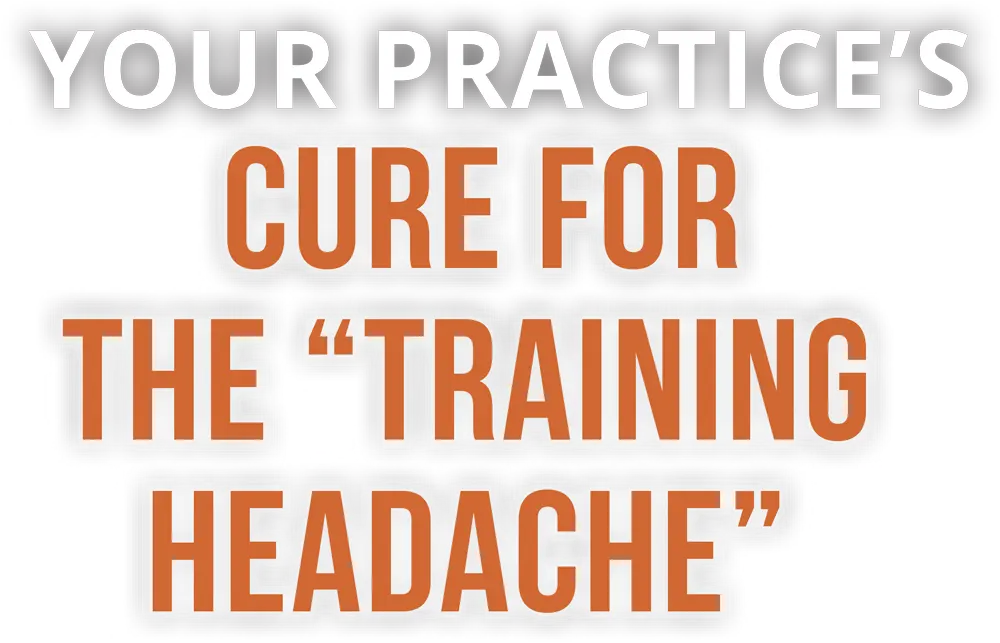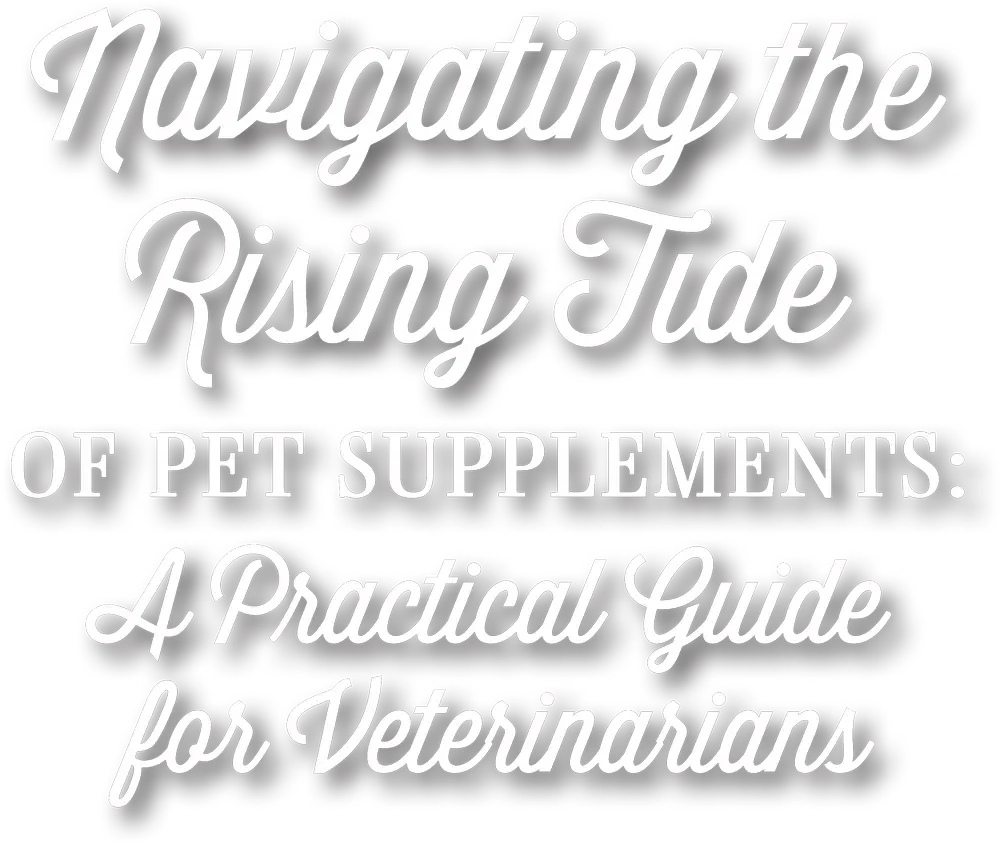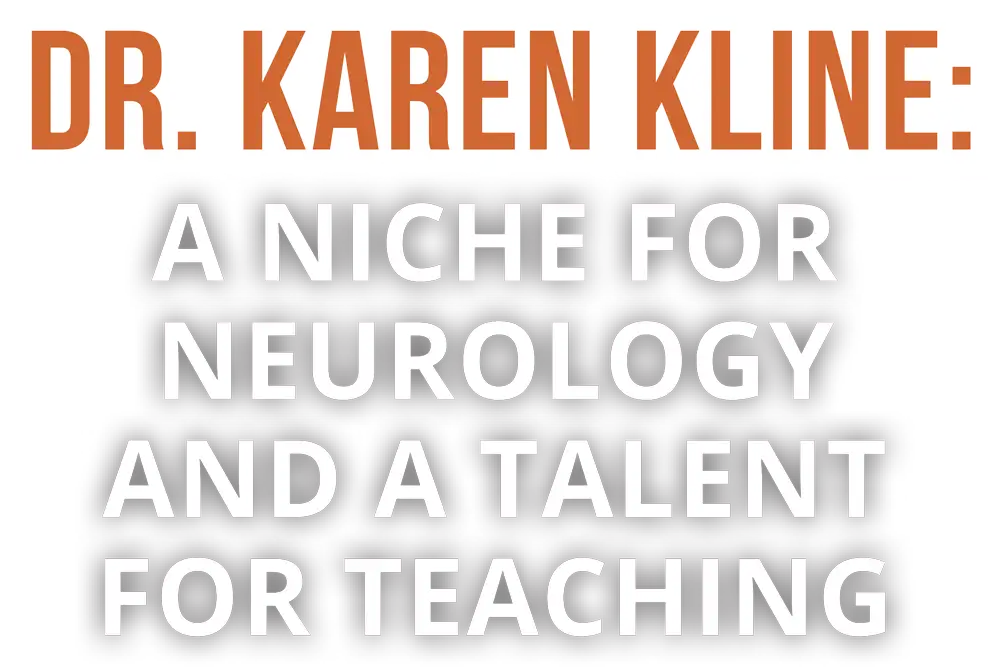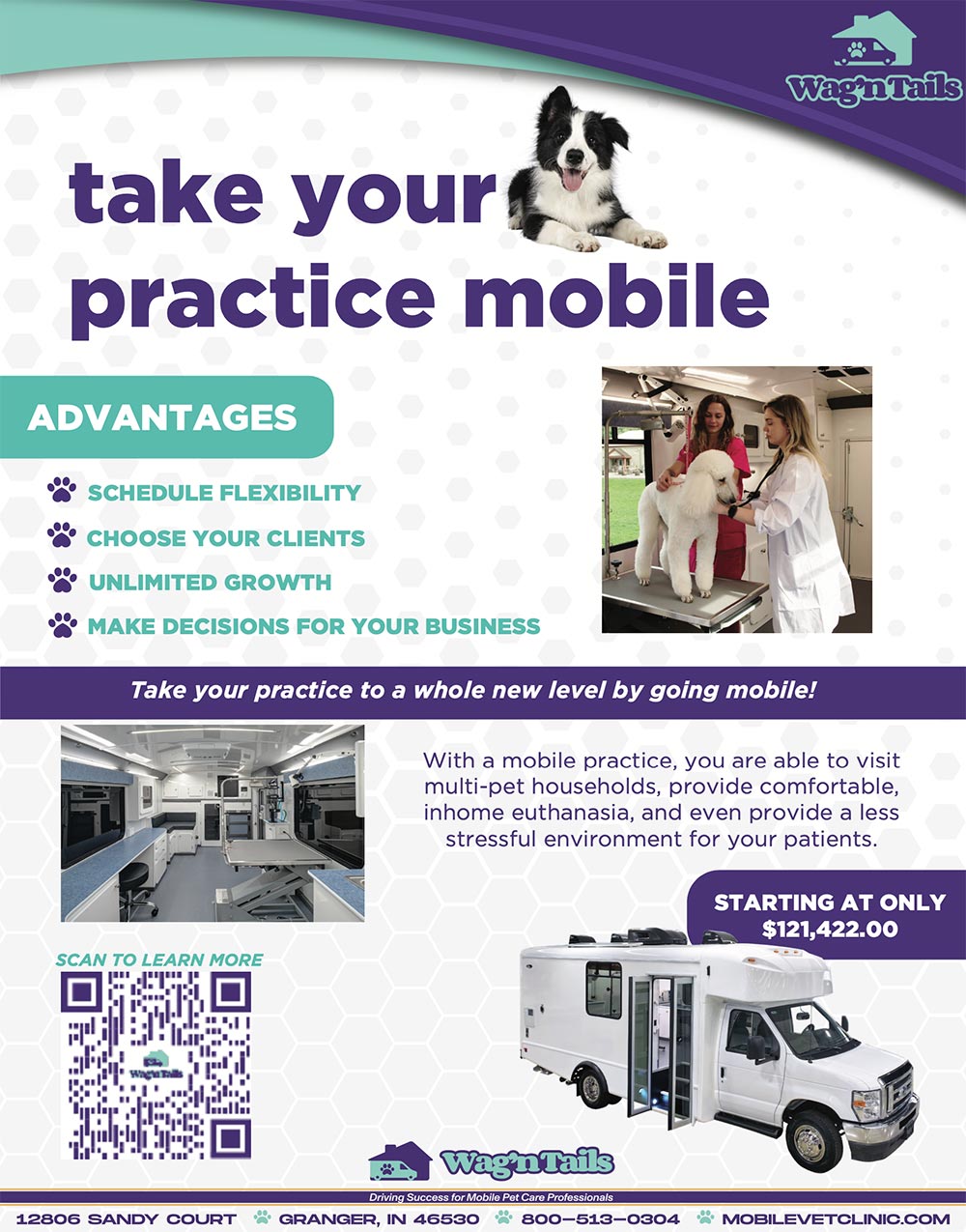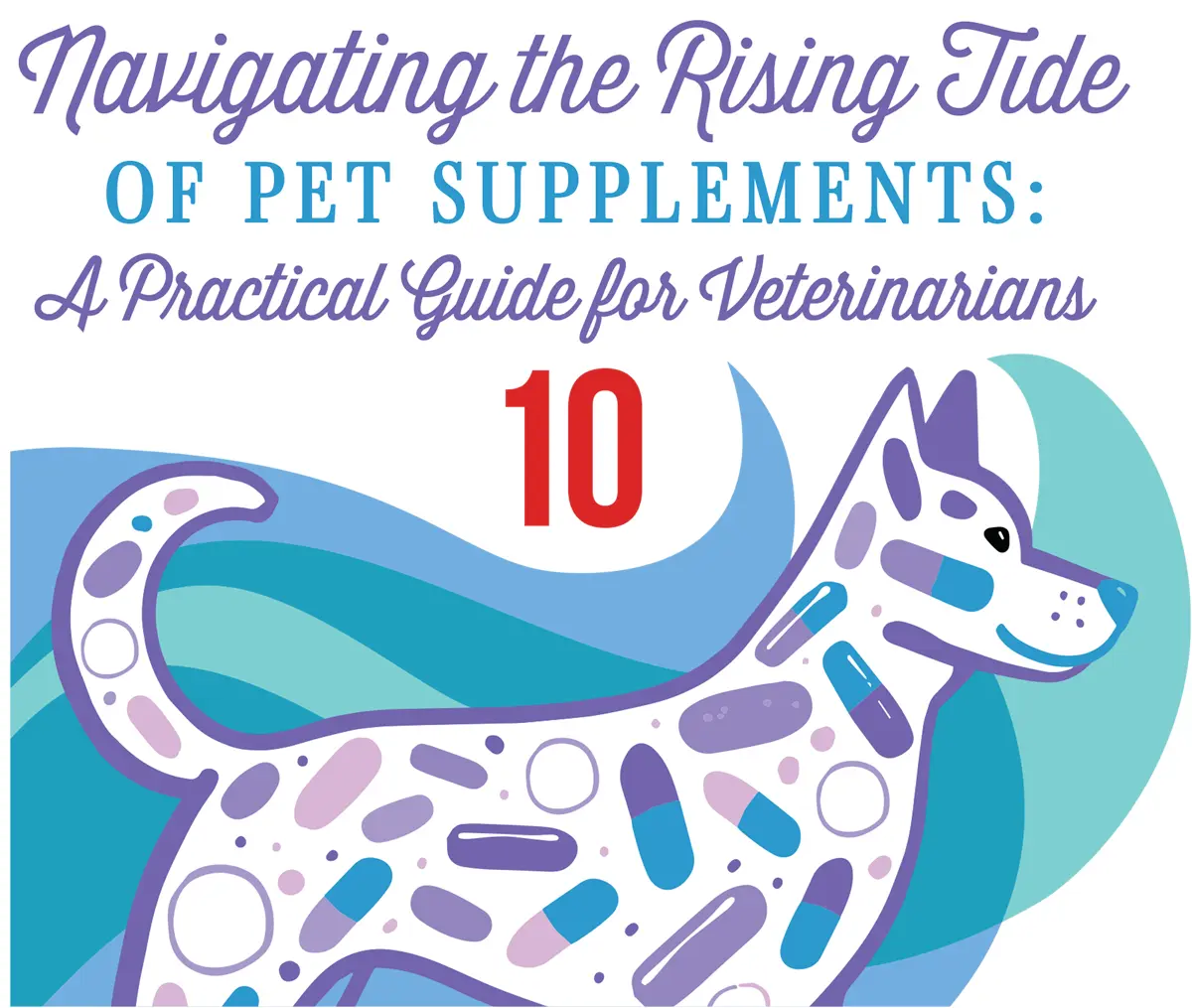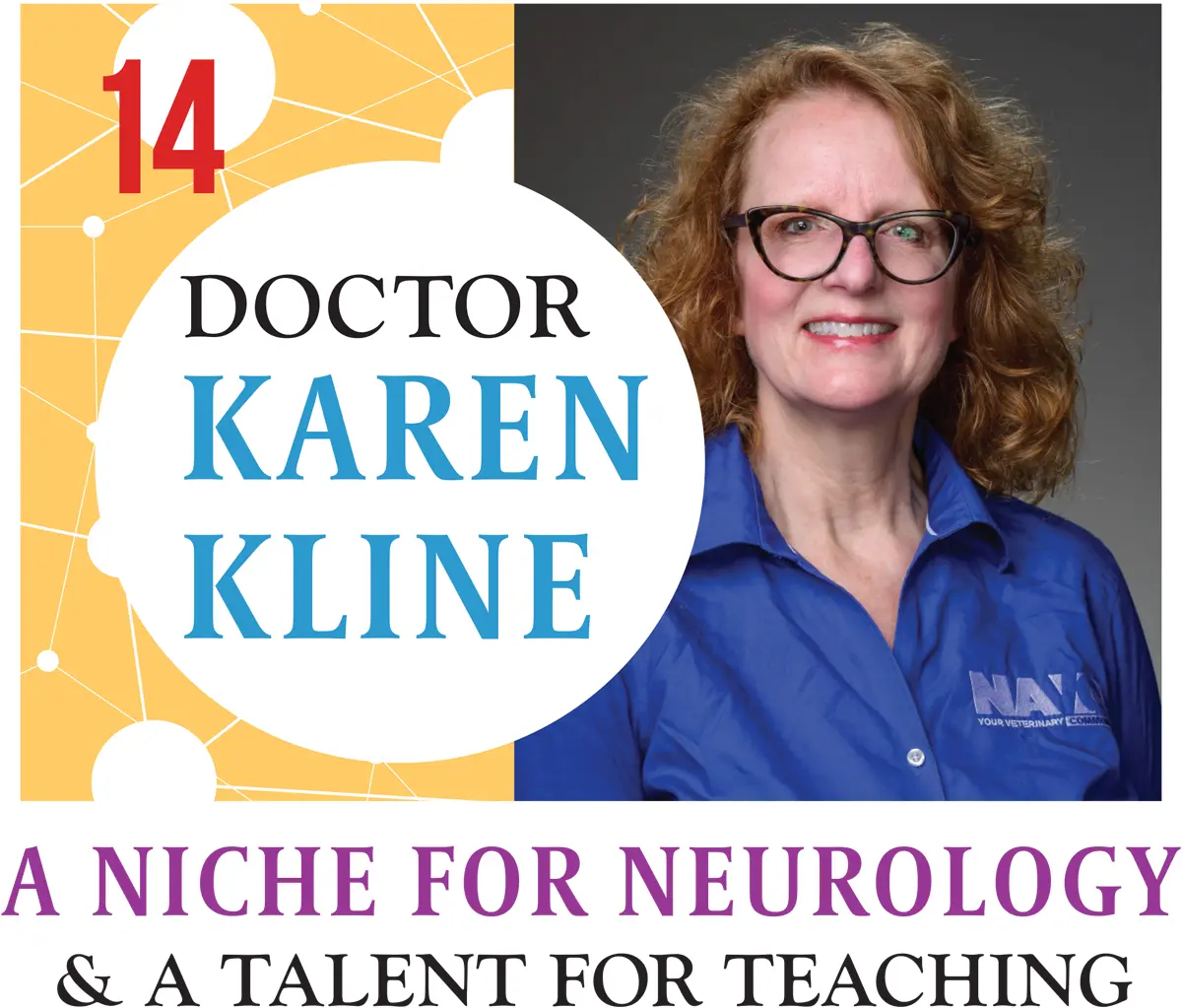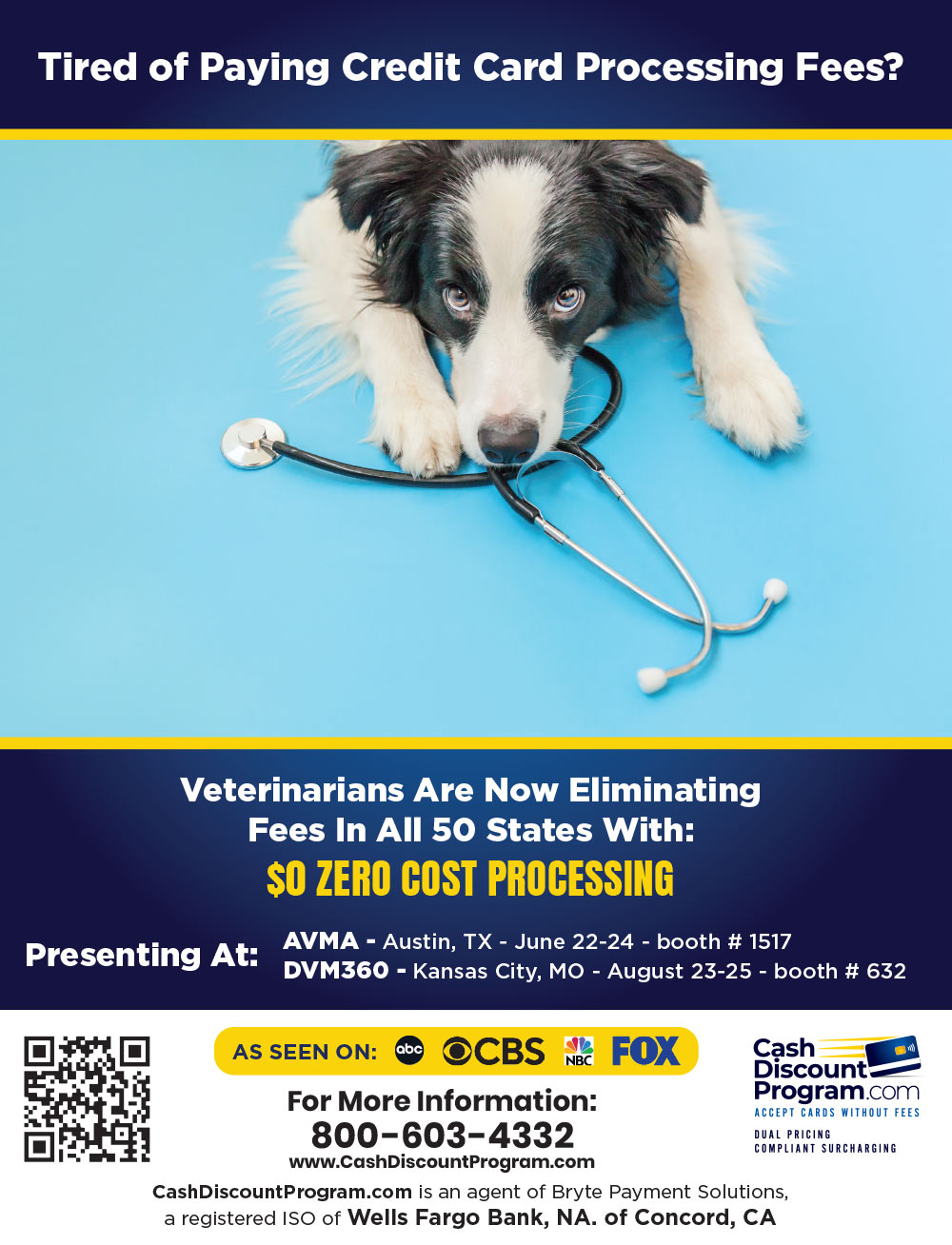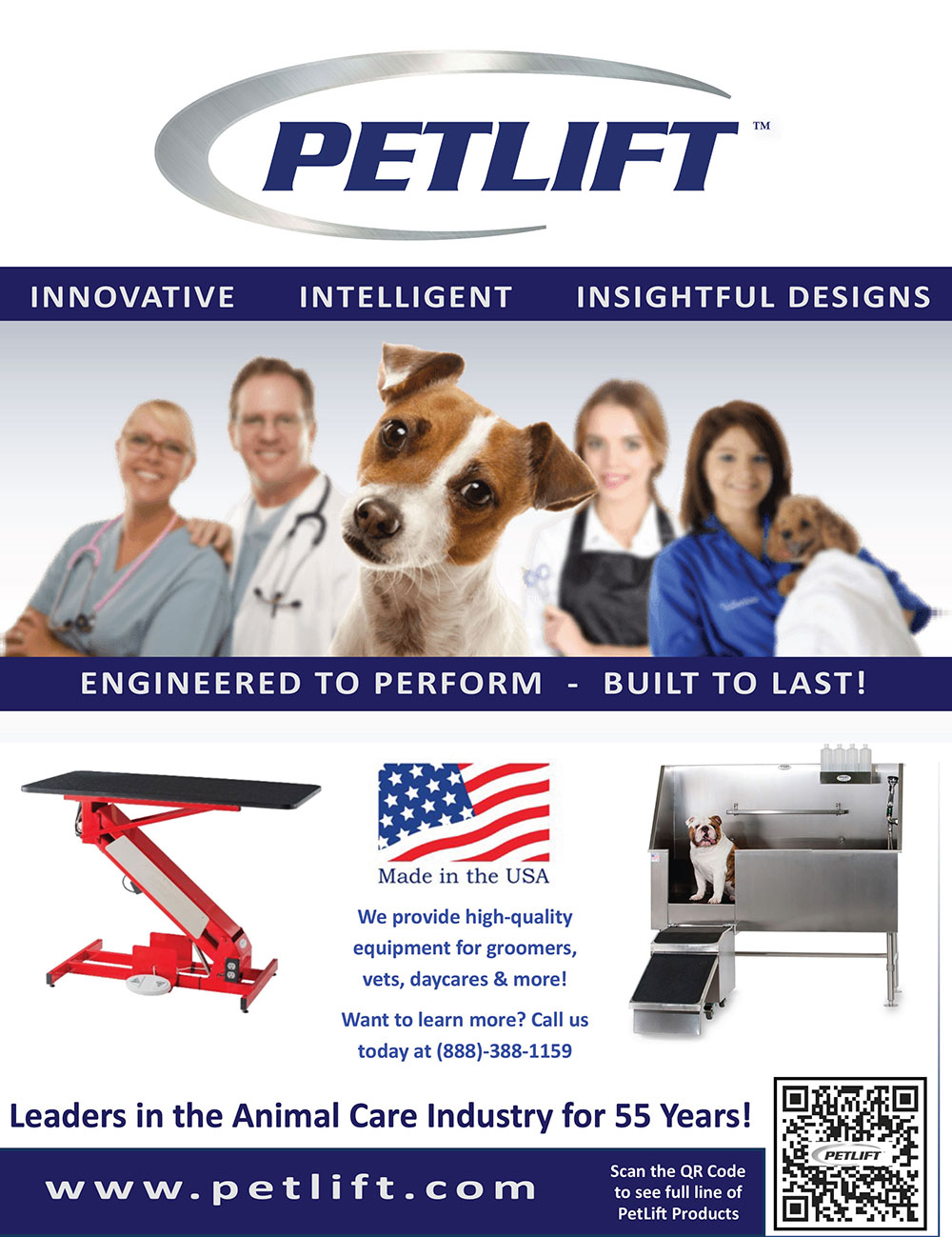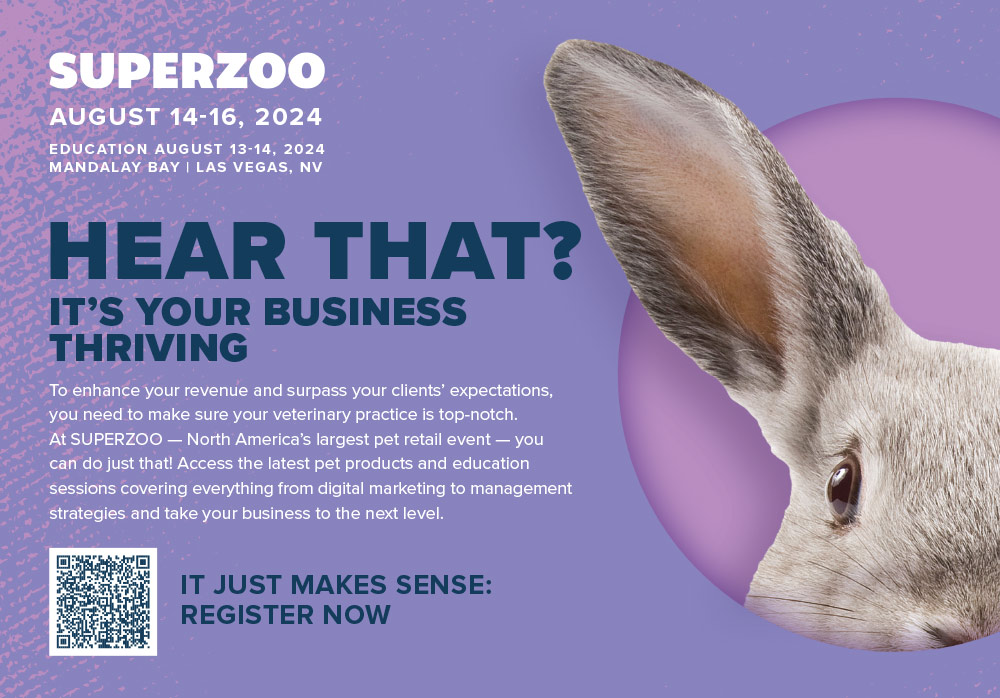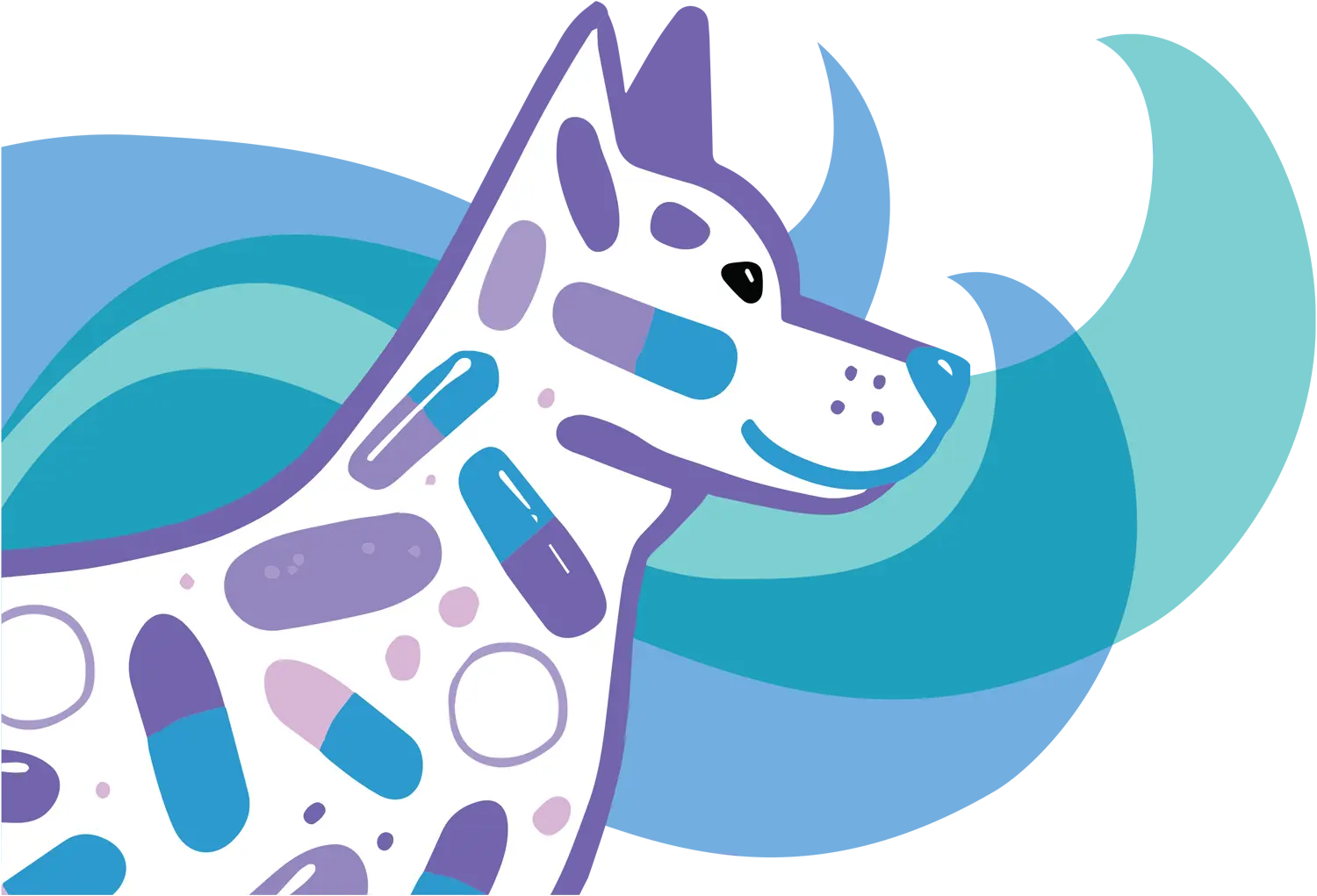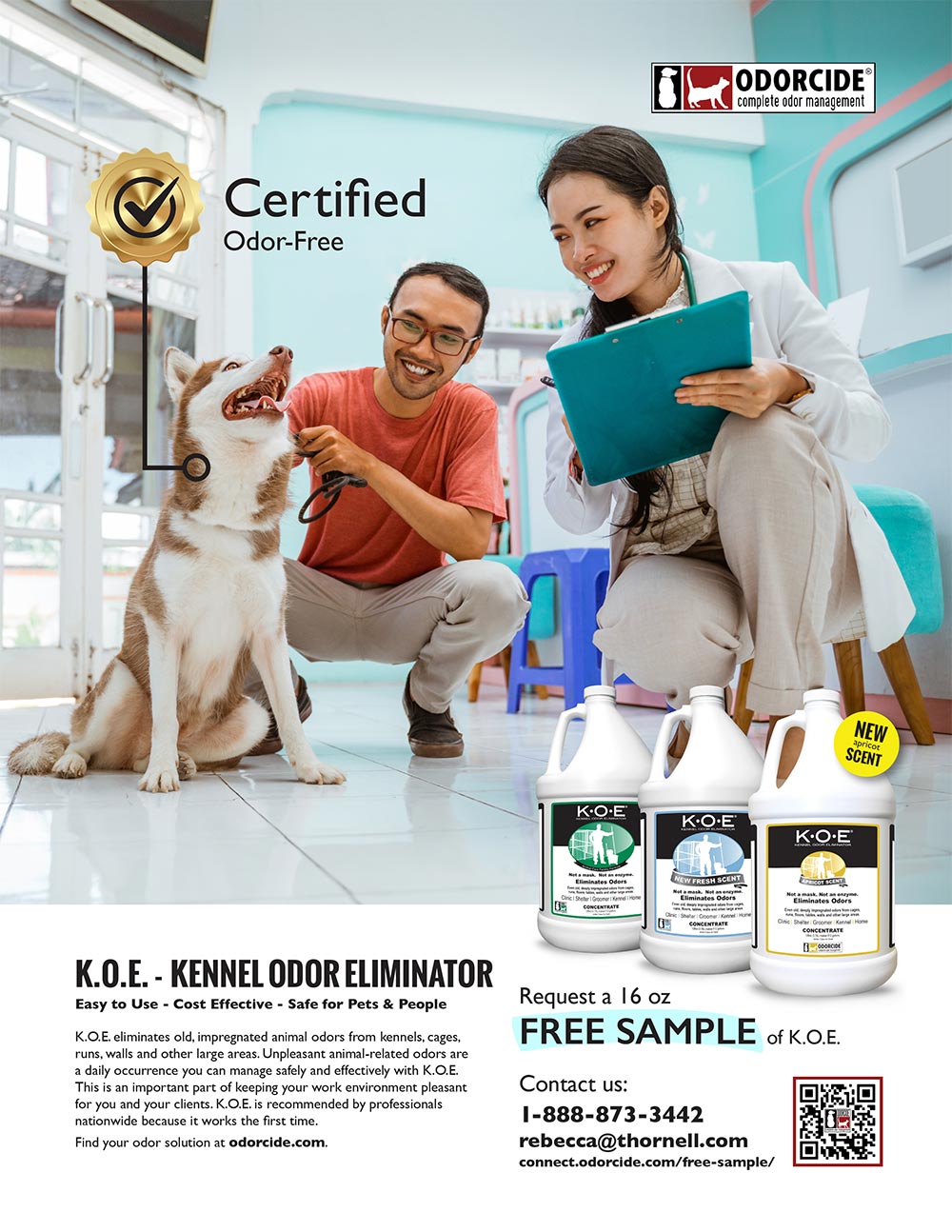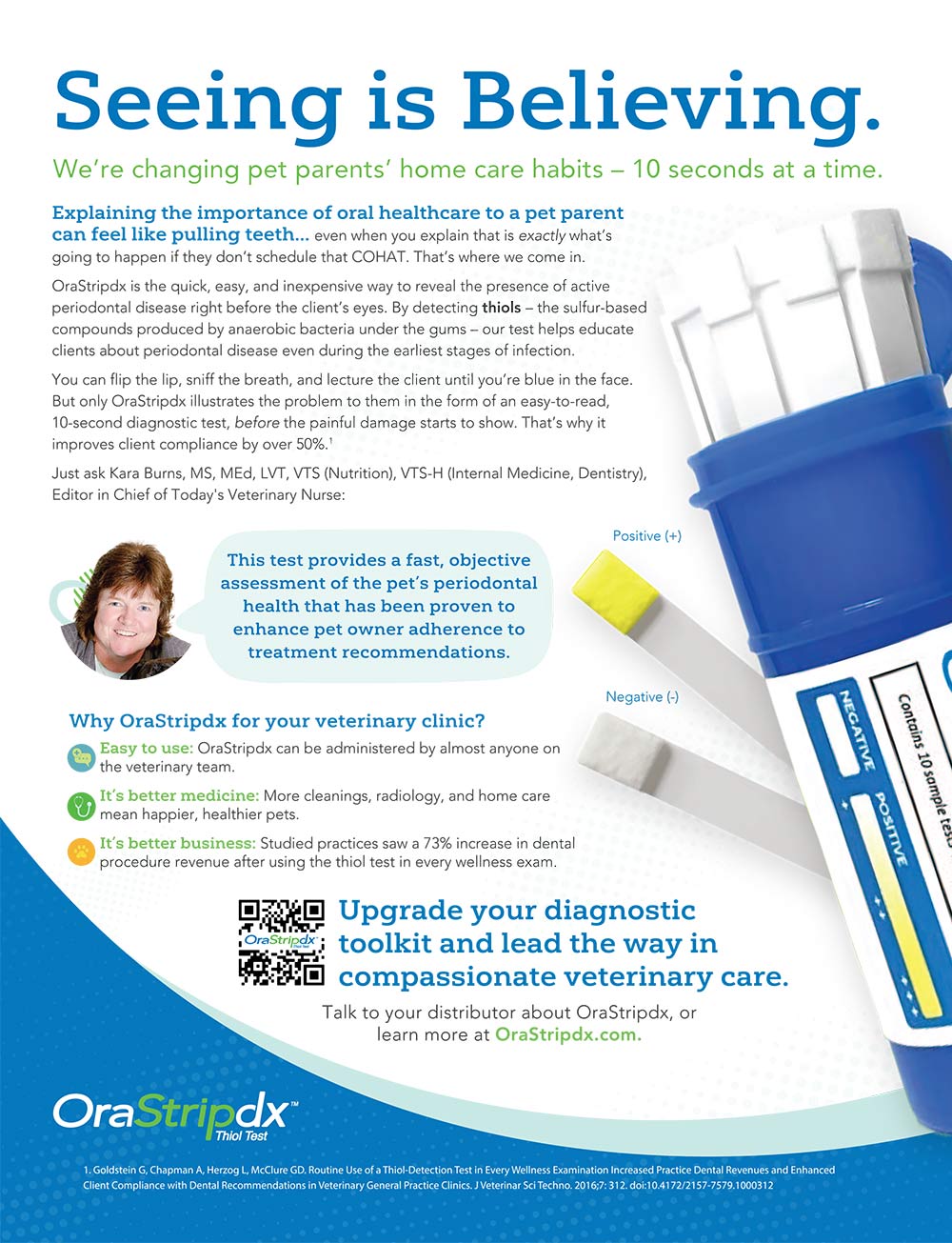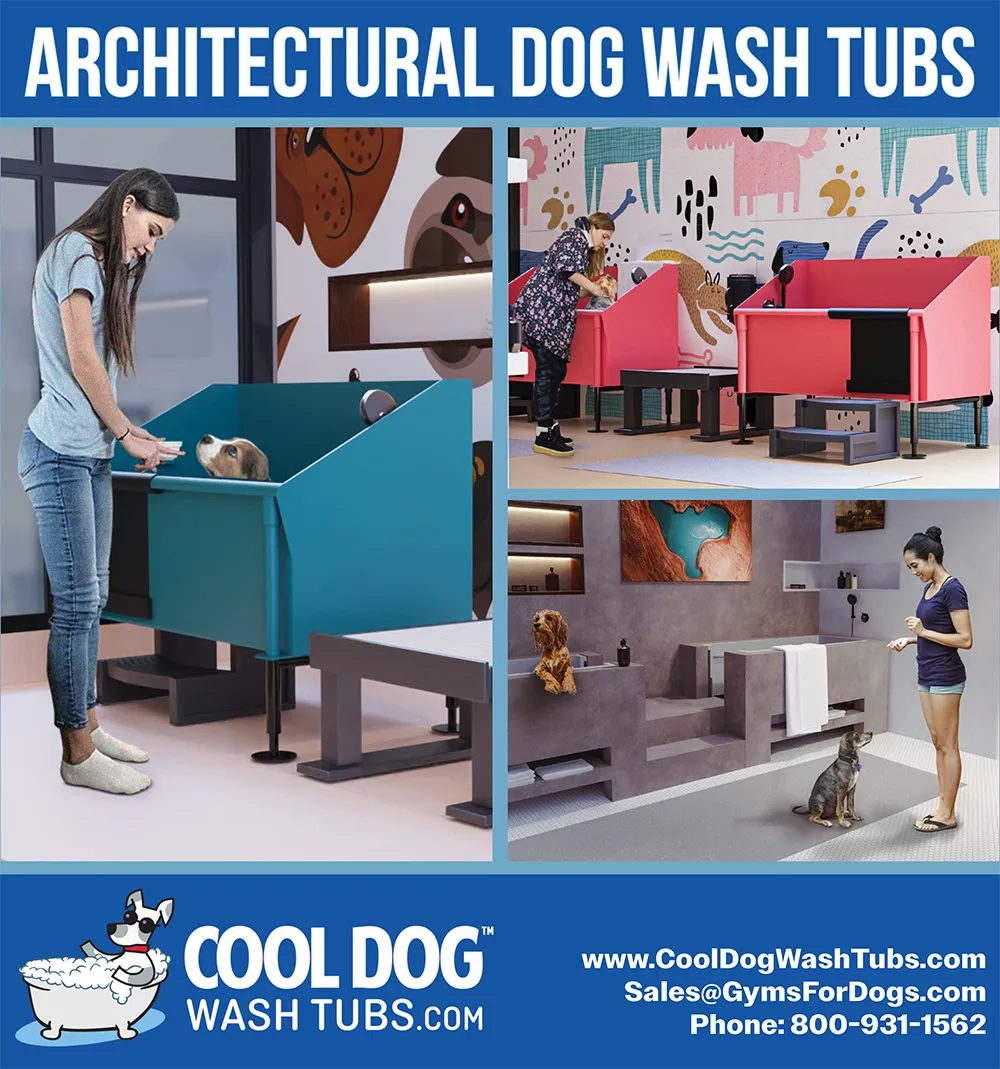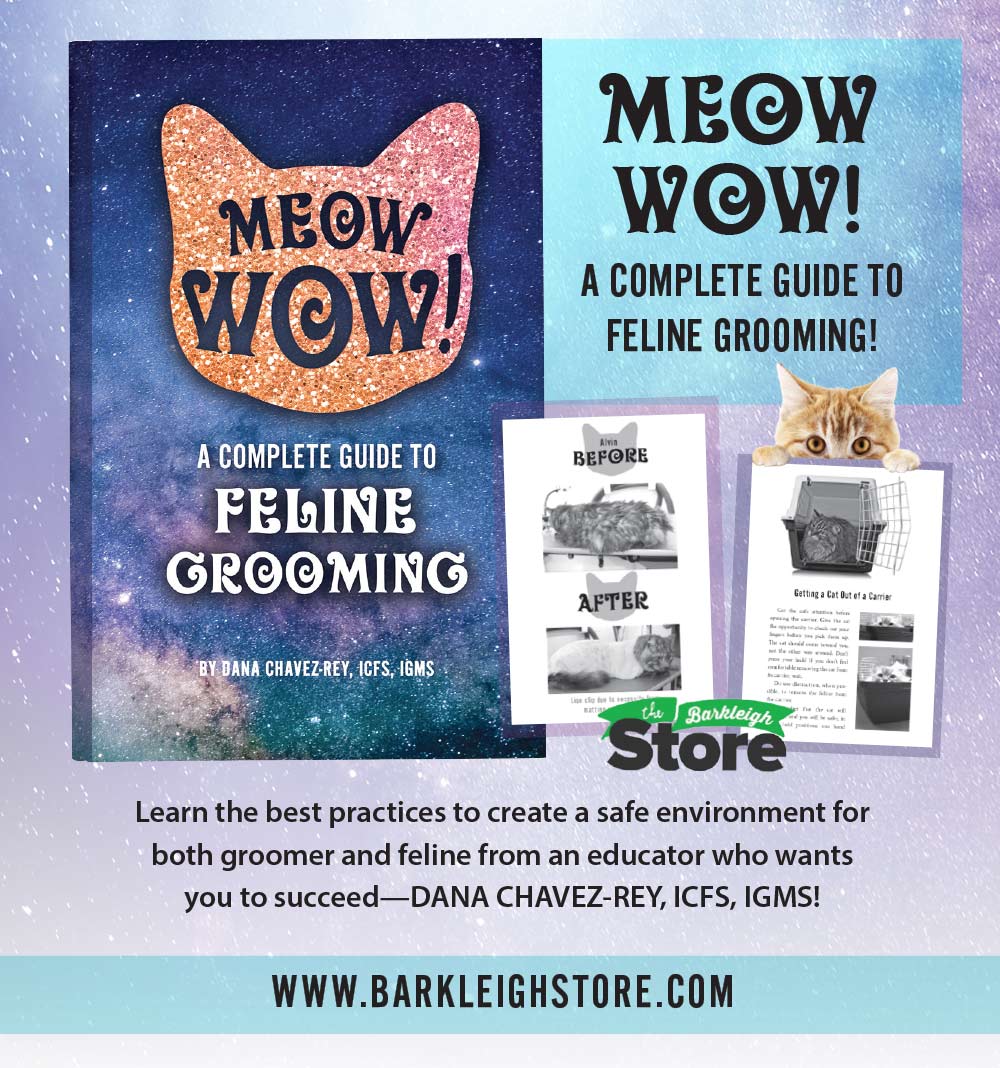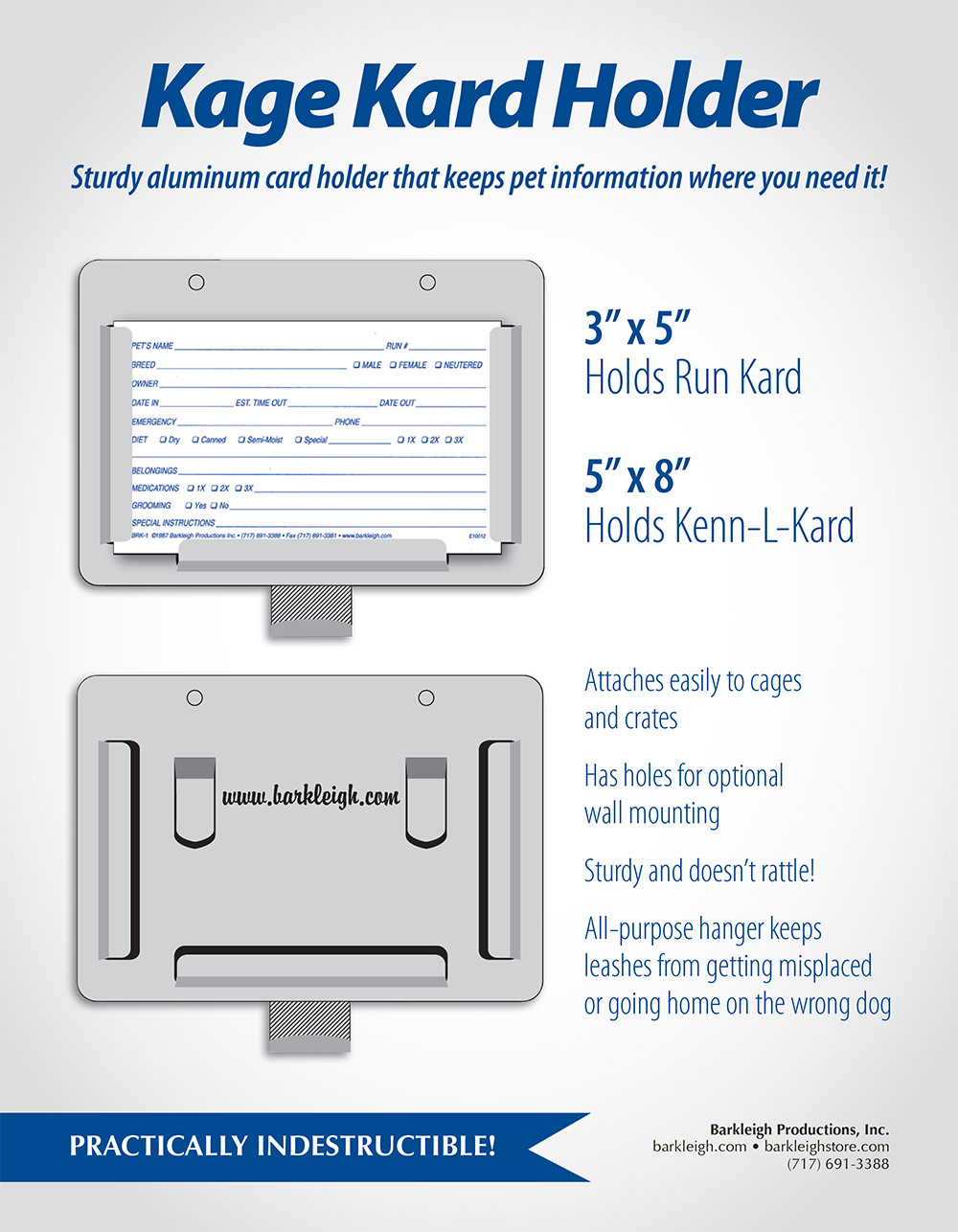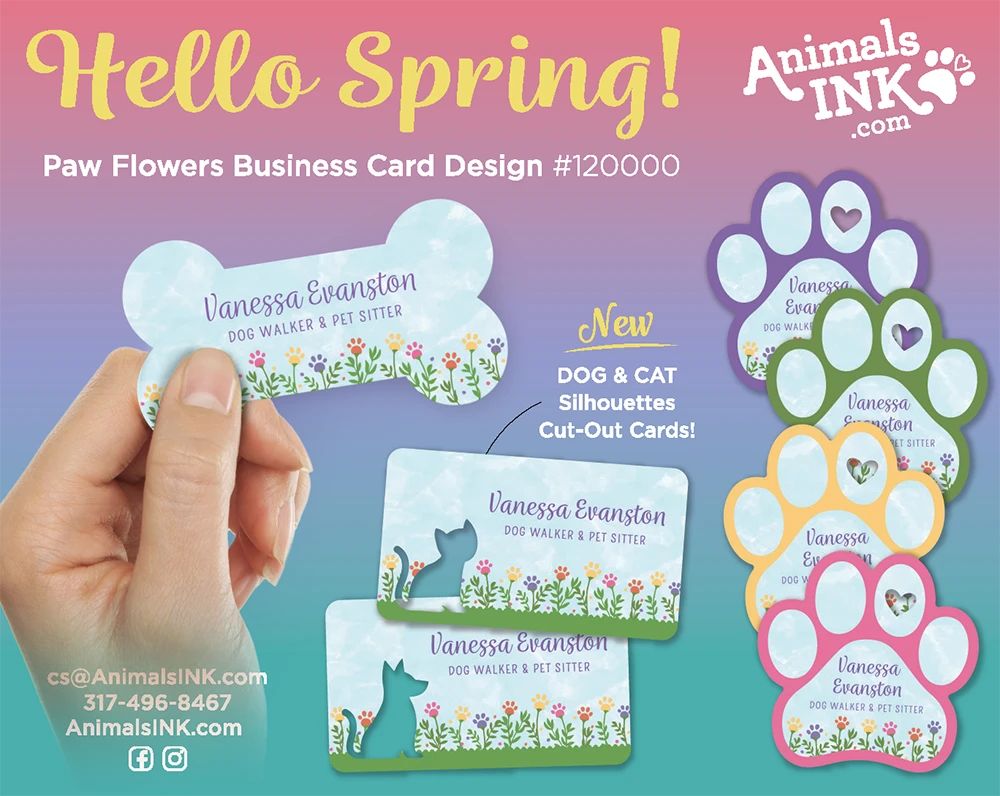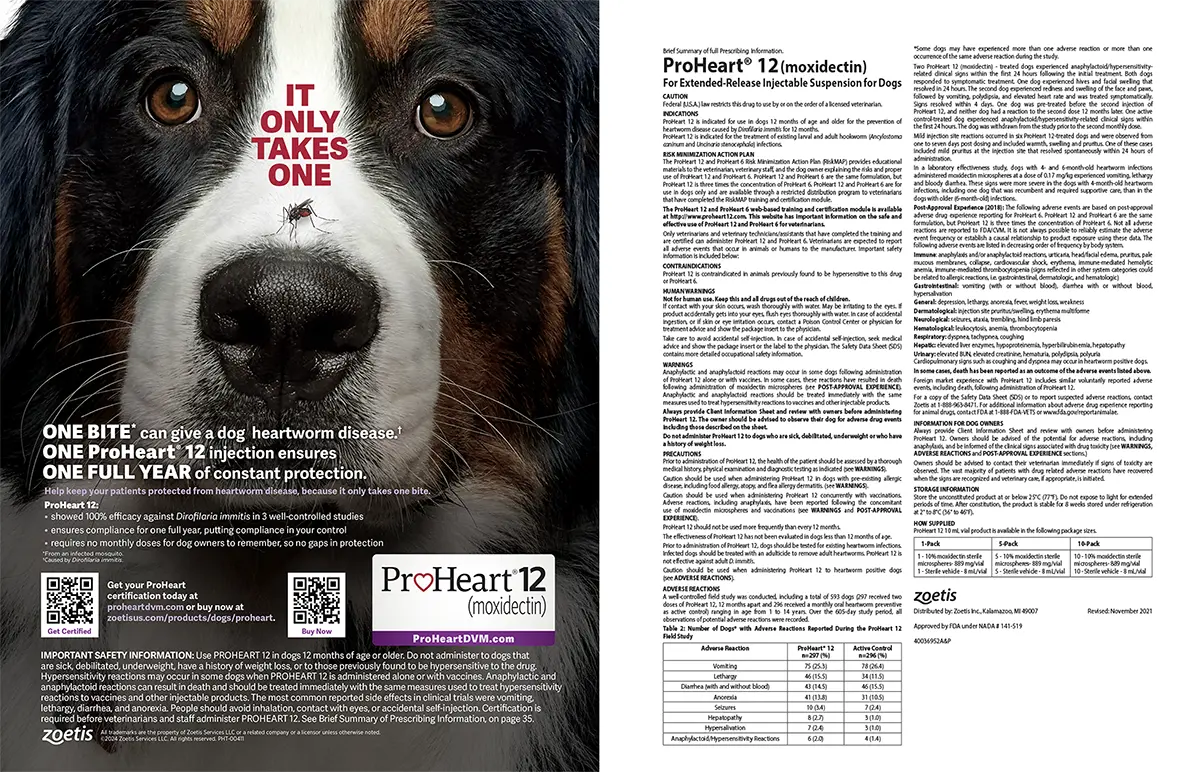
Inquiries
info@barkleigh.com
(717) 691-3388
Editorial
rebecca@barkleigh.com
Advertising
james@barkleigh.com
Copyright June 2024. PetVet Magazine is published bimonthly by Barkleigh Productions, Inc, 970 West Trindle Road, Mechanicsburg PA 17055. Postmaster: Send change of address to Pet Vet Magazine c/o Barkleigh Productions, Inc., 970 West Trindle Road, Mechanicsburg PA 17055. No part of this publication may be reproduced without written permission of the publisher. Editorial offices: 970 West Trindle Road, Mechanicsburg PA 17055. (717) 691–3388 FAX (717) 691–3381 Email: info@barkleigh.com
- Animals Ink31
- Barkleigh Store – Barkleigh Productions, Inc.34
- Barkleigh Store – Kage Kard Holder29
- Barkleigh Store – Meow Wow!23
- Cash Discount Program5
- Cool Dog Wash Tubs20
- Dykema15
- Gator Kennels21
- Jope12
- OraStripdx17
- Pet Boarding and Daycare Podcast25
- PetLift7
- Puppy Playground19
- SUPERZOO9
- Thornell Odorcide11
- Wag’n Tails2
- Zoetis – Simpiraca Trio35-36


Meet our EDITORIAL ADVISORY BOARD!

DVM, DACVS-SA

Jenifer Chatfield
DVM, Dipl. ACZM, Dipl. ACVPM

CVT

DVM, DACVECC
-
STAFF
- Publisher
Barkleigh Productions, Inc. - President
Todd Shelly - Vice President
Gwen Shelly - Chief Operations Officer
Adam Lohr - Executive Editor
Rebecca Shipman - Art Director
Laura Pennington - Sr. Graphic Designer
Brandi Aurelio - Jr. Graphic Designer
Carlee Kubistek - Web Master
Luke Dumberth - Marketing Consultant
Allison Smith - Social Media Coordinator
Cassidy Ryman - Digital Media
Evan Gummo - Director of Marketing & Client Relations
James Severs - Accounts Manager/ Executive Assistant
Karin Grottola - Administrative Assistant
Britany Smith

DVM, CVPM



– Karen Kline,
NAVC Board President 2024-2025



By Eric White & Virgil Ochoa
elling your veterinary practice is a significant milestone, marking the transition to a new chapter in your career. If you’re considering selling to a Veterinary Services Organization (VSO), sometimes called consolidators or corporate owners, careful planning and strategic decision-making are essential. The following serves as a comprehensive guide to assist veterinary practitioners looking to sell their practice to a VSO partner.


By Eric White & Virgil Ochoa
elling your veterinary practice is a significant milestone, marking the transition to a new chapter in your career. If you’re considering selling to a Veterinary Services Organization (VSO), sometimes called consolidators or corporate owners, careful planning and strategic decision-making are essential. The following serves as a comprehensive guide to assist veterinary practitioners looking to sell their practice to a VSO partner.
Selling your veterinary practice to a VSO presents an opportunity for growth and expansion. By leveraging the expertise and support of experienced advisors and aligning with a reputable VSO partner, you can navigate the process with confidence and secure a bright future for your practice and your patients.


(Undenatured Type II Collagen)
guaranteed analysis
“We founded Jope to offer evidence-based supplements and promote healthier lives for your patients.”
Dr. Christine Colamonico, DVM
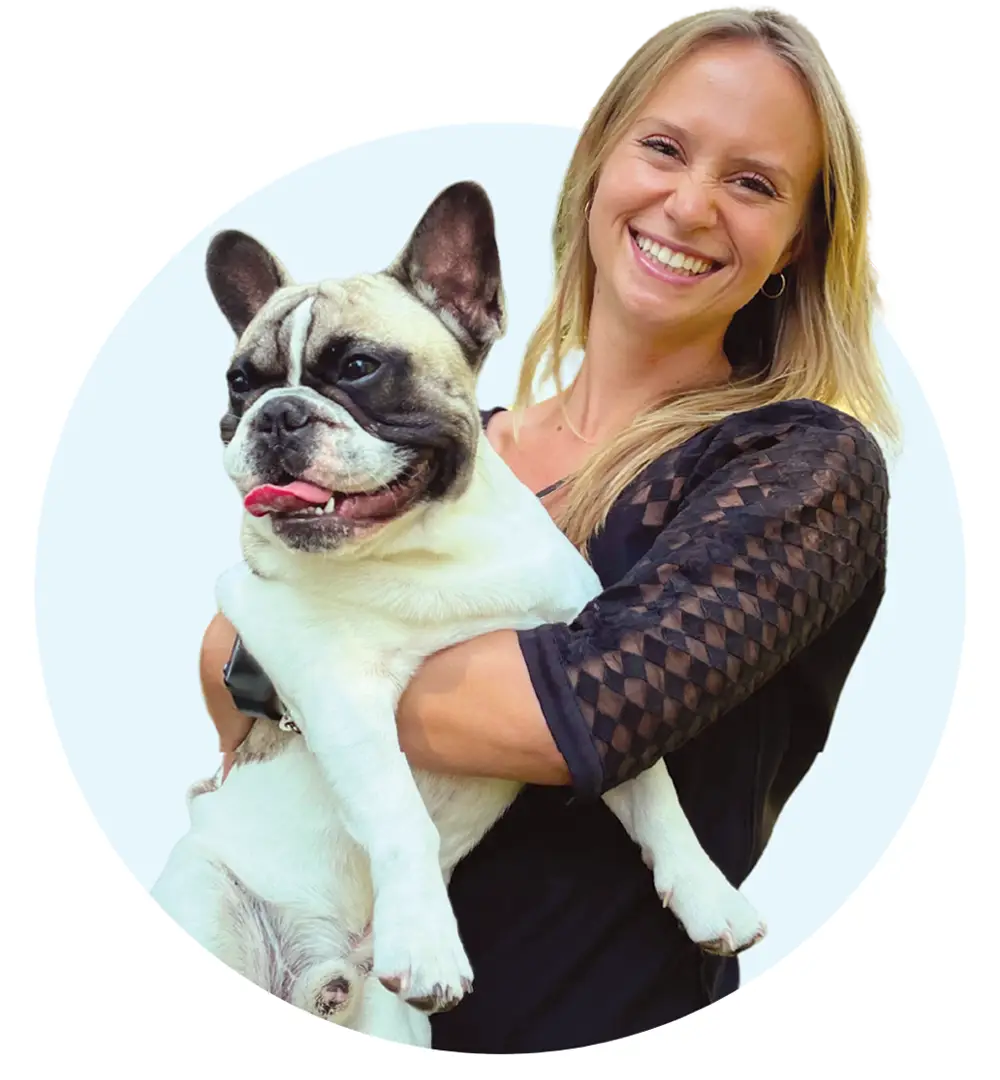

“We founded Jope to offer evidence-based supplements and promote healthier lives for your patients.”
Dr. Christine Colamonico, DVM






Photos provided by Dr. Karen Kline
o, long story short—a toad in the backyard and a Band-Aid, and the rest was history,” answers Karen Kline, DVM, MS, DACVIM (Neurology), when asked what early experiences pointed to a career as a veterinarian. “I was eight years old. The poor toad had been hit by a lawnmower and I attempted to help heal his/her wound by the application of the Band-Aid.
Fast forward, and I completed my undergraduate degree at Iowa State University and graduated with a Bachelor of Science degree in Zoology,” she continues. “I then applied for veterinary school and did not get in, as I did not have enough large animal experience. So, I took the year off and worked as a veterinary technician at a small animal practice in Ohio. If I had not been accepted into veterinary school, my plan was to be a teacher either in middle school or high school and to teach the sciences. Thankfully I was accepted into The Ohio State University CVM after working as a technician for one year.”
Once in veterinary school, Dr. Kline had aspirations to own her own practice but experienced a change of tune when she completed a preceptorship at St. Marks Veterinary Hospital in New York City with Dr. Sally Haddock, who introduced Dr. Kline to the Animal Medical Center (AMC) in NYC.
As a specialty that most veterinarians are uncomfortable with, Dr. Kline says this is one of the reasons she chose to focus on neurology. In addition, she also wanted to learn more about how intricate the nervous system is and how her patients manage to survive such incredible injuries and illnesses, and it allows her to perform surgery.



A typical day for a veterinary neurologist is unpredictable, as neurologic animals can present as emergencies at any time of day or night. Dr. Kline’s main focus, along with teaching the veterinary students, is to present all available diagnostics and treatment options for her clients when their beloved pets are ill and need help.
“In both of my hospitals, I have in-depth conversations with my clients after a full neurologic and physical examination of their pet and then we discuss options for diagnostics and care,” she explains. “From there we will admit the pet and proceed on with necessary testing and interventions as needed.
In an ever-evolving world, the specialty of veterinary neurology is trying to keep pace with new innovations. Over the last 25 years, MRI (magnetic resonance imaging) has become the standard of care.
“I do think it is possible that other technologies that are used in human medicine, such as photon emitted tomography (PET scan) and CyberKnife radiation therapy, are in the forefront,” Dr. Kline notes. “With the emergence of AI, it is possible that this technology could augment teaching, patient care, data management and collection, and communication in the future.”
The core of neurology is the ability to localize the lesion in the patient so when the general practice veterinarian discusses the referral with a neurologist, they can describe the lesion and whether it is located in the brain, spinal cord or neuromuscular system. A plan of action can then be formulated and the veterinarian can discuss this with the owner.
“It is vital to know that many neurologic cases need immediate care and treatment (like seizures or paralysis) based upon clinical signs and the breed of the patient (for example, French Bulldogs),” Dr. Kline explains.
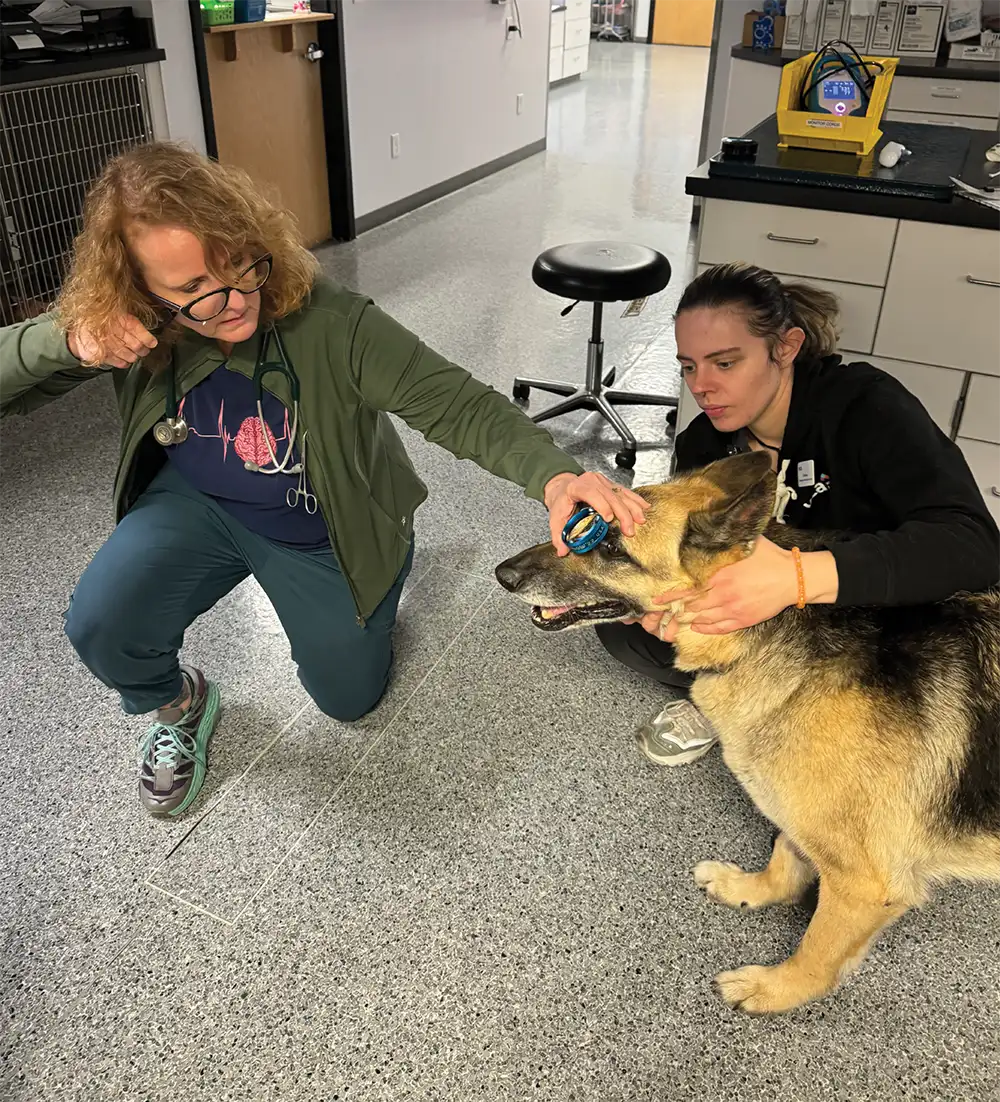


In addition, Dr. Kline has had the privilege of being a professor at two colleges of veterinary medicine. “My passion is teaching and I am hoping that I can help to develop a more refined hybrid model (faculty sharing) to benefit both academia and specialty veterinary practice,” she says.
Dr. Kline has been fortunate to travel both domestically and abroad as president of NAVC and as a member of their Board of Directors, but she also enjoys her home life on her five-acre property in Oregon with her husband, a retired large animal veterinarian, and their rescue Pit bull, Voodie.
To conclude, Dr. Kline leaves us with this advice: “The future of veterinary medicine depends on collaboration between colleges of veterinary medicine and specialty veterinary practices. Access to care has been difficult for our veterinary clients and it is our responsibility as clinicians and specialists to make sure that we follow our veterinary oath and provide quality care for all of our clients regardless of financial strata or demographic disparity.”




ike other healthcare-related fields, veterinary medicine can be a demanding world that requires diverse skills and real-world experience. While classroom learning lays the foundation, internships and externships play a pivotal role in bridging the gap between theory and practice. However, securing these opportunities has grown increasingly competitive over recent years, especially among residencies. So, why consider venturing into these postgraduate opportunities?
With options like rotating, specialty and residency programs, motivations vary and are unique to each aspiring veterinarian’s goals and desired outcomes. Regardless of your “why,” navigating today’s competitive landscape requires both strategic decision-making and the development of skillsets that go beyond the practical to ensure you stand out. Here are some key considerations to help guide future veterinarians through the process:


By Dr. Brett Shorenstein, VMD
ike other healthcare-related fields, veterinary medicine can be a demanding world that requires diverse skills and real-world experience. While classroom learning lays the foundation, internships and externships play a pivotal role in bridging the gap between theory and practice. However, securing these opportunities has grown increasingly competitive over recent years, especially among residencies. So, why consider venturing into these postgraduate opportunities?
With options like rotating, specialty and residency programs, motivations vary and are unique to each aspiring veterinarian’s goals and desired outcomes. Regardless of your “why,” navigating today’s competitive landscape requires both strategic decision-making and the development of skillsets that go beyond the practical to ensure you stand out. Here are some key considerations to help guide future veterinarians through the process:
-
Internships provide recent graduates with practical experience and opportunities to refine their clinical skills under seasoned professionals’ guidance in a clinical setting. These immersive programs expose interns to diverse cases, specialties and procedures, helping them build confidence and competence. However, the financial and time commitment can be significant factors to consider when exploring this path.
Recent graduates typically kick-start their journey with a rotating internship, which is highly recommended for honing surgical, medical and emergency skills. This step is often a prerequisite to coveted specialty internships in cardiology, diagnostic imaging and more, where dedication and that extra year of expertise can pave the way to landing a competitive residency.
-
Externships offer students the opportunity to explore various facets of veterinary medicine in an intensive, controlled environment. These short-term placements apply educational knowledge in real-world scenarios to deepen understanding and aide in informed decision-making. Externships focus on developing specific clinical skills without the financial strain or time commitment of internships, making them a beneficial option for recent graduates. However, opportunities may be limited by individual veterinarian school offerings.
Engaging in an externship at the prospective internship site provides valuable insights into the organization’s operations and day-to-day activities, offering a firsthand understanding of the work environment and facilitating informed decision-making about potential future roles before applying.
-
Residencies are advanced postgraduate training programs that specialize in specific areas of veterinary medicine, offering intensive, focused training. Typically spanning several years, these programs equip residents with in-depth knowledge, hands-on experience and mentorship, preparing them for advanced roles within their chosen veterinary specialty.
To maximize opportunities, residents should take the time to fully understand treatment plan adjustments, asking senior doctors additional questions to absorb the educational experience.
-
Networking is a key to success, as it fosters professional connections that can lead to collaboration, mentorship and career opportunities. A strong network can help new veterinarians understand emerging industry trends and insights and create a supportive community that enhances both personal and career development.
It is critical to start building these professional relationships early on. Consider your existing network of fellow students, recent graduates, professors, clinicians you’ve studied with, and even alumni who may be willing to support you. Additionally, joining veterinary medicine associations expands your network to gain exposure to colleagues in your area.
- Shadowing in the veterinary field provides aspiring professionals with a firsthand glimpse into the daily responsibilities and challenges faced by practicing veterinarians. This experience helps individuals confirm their passion for the profession and allows them to observe various veterinary practices and medicine specialties.
-
Mentorship also plays a pivotal role in professional growth and development by providing guidance and support at the start of your veterinary career. Established veterinarians offer a unique perspective that taps into years of experience.
Mentors are invested because they understand the importance of starting your career on the right foot, leading to the next generation of veterinarians. Many veterinary networks are working toward creating their own internal mentorship programs to ensure that veterinary professionals are set up for early-career success.
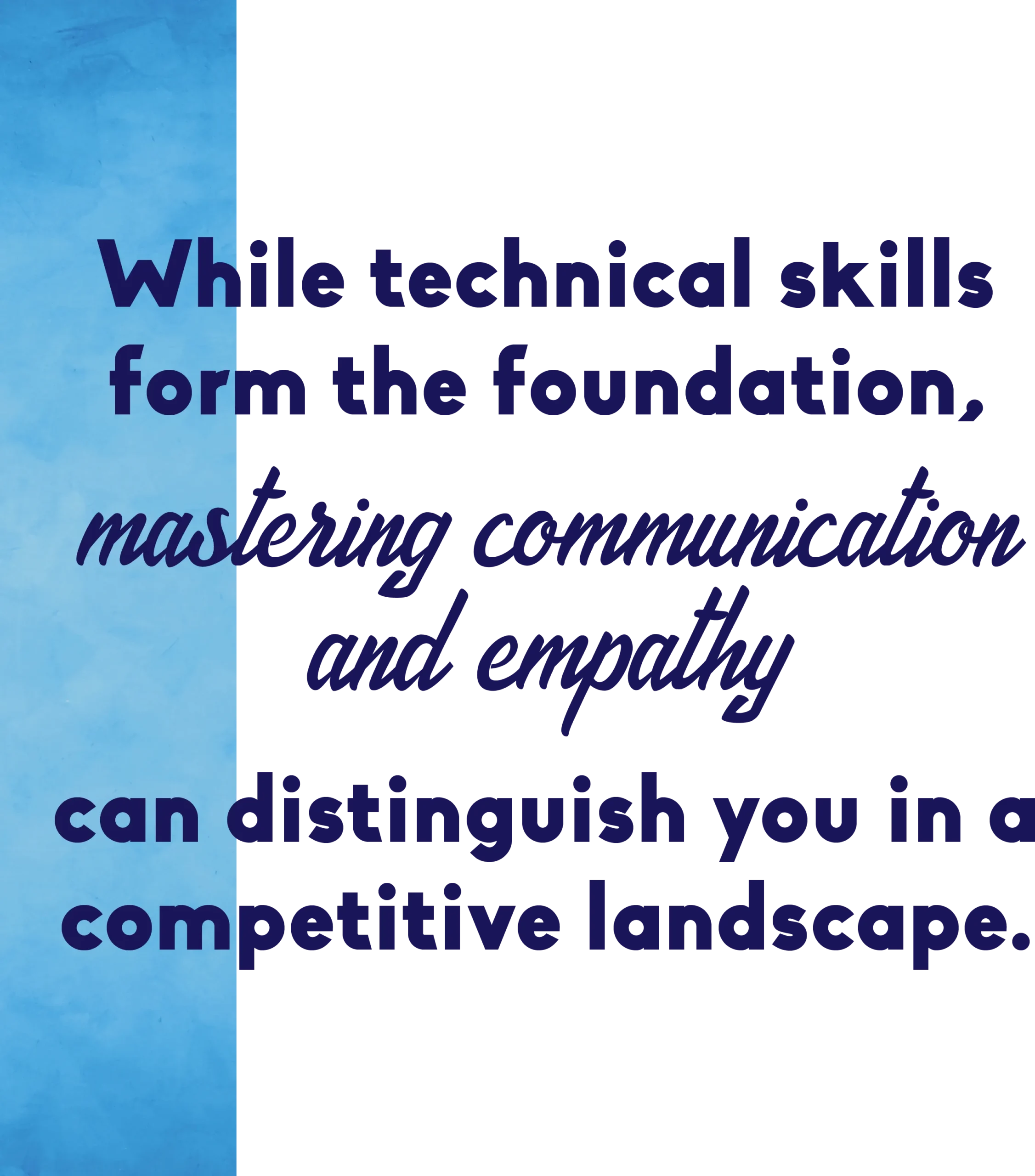
Depending on your goals, acquiring business skills can enhance your understanding of efficient veterinary practices and hospital operations. Many schools offer opportunities to obtain a veterinary business certificate, which serves as a foundation for learning how veterinarians play a vital role in supporting and growing the business. While not mandatory, adopting a business-focused mindset can complement your skillset and set you apart from the competition when marketing yourself as an asset to a veterinary team.
Veterinary professionals are held to high ethical and professional standards. Demonstrating academic excellence reflects a veterinarian’s commitment to upholding these standards throughout their career, enhancing their professional credibility. Additionally, students should maximize campus resources and stay up to date with the latest research, industry news and advancements to ensure they are remaining ahead of the curve in this evolving industry.
Charting your veterinary career path can be winding. However, approaching this journey with humility, an open mind and a positive attitude can go a long way. These experiences will not only refine your skills and build confidence; they will also elevate animal care and welfare through your knowledge and expertise.
Reflect on your “why” for choosing this career path. As the veterinary field continues to evolve, practical experiences gained through internships, externships and residencies become increasingly imperative. Staying competitive ensures optimal experiences that will enable you to deliver the best possible care to patients and their families.




e all know the benefits of a well-trained team. We all make an effort to incorporate training into the fabric of the business—from training a new hire to training on a new procedure or process. And we all become frustrated with the headaches caused by the need to train. That’s why it’s important to identify and fix the weaknesses in your training program to make the headaches go away.
The SWOT acronym (Strengths, Weaknesses, Opportunities and Threat), although commonplace in most business discussions, is sadly underused in the training arena. Why do a SWOT analysis on a training program? Well, for some it may be because the practice is experiencing high employee turnover, is in a hiring phase due to expansion or perhaps better control over training costs is needed. For many, merely alleviating the headaches caused by a subpar training program is the driving force. The key is to examine all factors leading up to the training session to mitigate anything that has the potential to create a headache.
It is vital to have a clear understanding of when the business needs to conduct training. Sure, a new hire or a poor performer comes to mind, but is there a strategic business plan for other critical situations? For example, the following:
- Change in technology (e.g., telehealth, new equipment)
- Change in business practice (e.g., Fear Free protocols, chronic condition care, treatment protocol)
- Change in company policy (e.g., job duties, laws/regulations, remote work)
- Slow-down or growth in the business(e.g., economic changes, personnel changes, client demographics)
The business side of running a veterinary practice must communicate with the management of the personnel. If the business is considering a change, the team needs to be prepared (i.e., trained) to perform any new responsibilities. That’s why it’s important to SWOT the critical parts of the current training program, including:
- Applicable job duties (per all of your job descriptions)
- Documentation during the training process
- Feedback & communications
- Training resources
- Training methods
- Scheduling
- Preparing those who will do the training
When it comes to failure of a training program, it is like a three-legged stool; weakness in one leg will result in a collapse. The point of failure may be the person receiving the training due to lack of interest, information overload or an inability to connect their personal learning preference with the training method being used. The person conducting the training could also be the culprit due to competing priorities, lack of interest or poor planning. Or business/management may be the weak leg because of limited budgeting, lack of resources, poor planning or neglecting to follow up.
Performing a SWOT analysis requires taking a hard look at any failed training attempts to pinpoint areas of weakness and missed opportunities. However, it should be balanced with a look at successful training, focusing on what worked well to determine if/how it can be repeated.
When a patient is presented with vomiting and diarrhea, what are we trained to do? Assess the condition and treat the symptoms while determining the root cause. Well, the same applies to training headaches. The actual root cause of the headache or failed training program often turns out to be something that could have been prevented if steps had been taken early in the process. Consider these common causative factors of training headaches:
- Hectic schedules/competing priorities. You know how it goes—an emergency comes in, not everyone will come in on their day off, people won’t stay after their shift is over, a backlog of phone calls or chart documentation needs to be completed….there is always some reason that prevents people from attending a training session.
- Different learning habits. There are four or five different generations in the workforce and even more diverse learning styles within the team. While some people learn well by reading, others do better by seeing. Collaborating with colleagues is one of the best ways to learn because it allows team members to work towards a common goal, brainstorm and share knowledge.
- Lack of engagement. There are several reasons why an employee is not interested in participating in the training program; maybe the topic is not relevant to the employee’s job, or perhaps the employee does not see the “why.” Of course, competing priorities and different learning habits may also be playing a role and should be considered.
- Information overload. It is challenging to squeeze in an hour-long lunch-and-learn session with the team, coupled with all the material that is packed into that hour-long meeting, and you have a lot of information with no time to “digest” and ask questions (let alone inhale lunch at the same time).
- Untrained trainer. The person who is conducting the training session must receive information on how to deliver consistent training sessions, provide and receive feedback, and track post-training performance. We are not all born teachers.
- Lack of planning. This is pretty self-explanatory, but more information about this is in the following section.
- Costs. Limited budget and training resources will make it difficult to deliver material and conduct a post-training assessment of the success of the session.
Some steps can be taken to treat the common causes, but there will never be a one-and-done fix. Since each training session involves different personnel and different requirements, there will always be a need to identify critical issues before starting the training session.
- Identify the needs. This includes the needs of the individual, the business and the person/supervisor doing the training.
- Identify how to evaluate the success. Communicate in advance how success will be measured (e.g., completed checklists, passing scores on tests, performance evaluations, business KPIs).
- Identify what will change. Communicate expectations such as performance improvement, acquiring a new skill or knowledge, or opportunities in the services offered by the business.
- Identify the impact on the business. This could include improved patient care, client service, business metrics or team performance.
In order to properly organize the training process, the following will need to be included:
- Agreed-upon KPIs (metrics, evaluation scores, test scores, etc.)
- Assigned personnel (trainers or subject matter experts)
- Training processes (virtual, web-based, group or classroom, on-the-job, gamification, feedback, etc.)
- Resources and tools (manuals, materials, SOPs, internet access, rewards & recognition, etc.)
- Expenses/Budget (wages for the student and the trainer, materials)
For the new hire, assessing their current knowledge and acclimating them to the culture of the practice will have different requirements when compared to working with an existing team member in need of improving job performance, or when compared to training the team on a new procedure. Training is not the same across the board, although the template to organize each training program will be similar. It is in using an organized template that alleviates some of the headaches associated with training, as crucial steps are not missed.
- New Hire. Consider using quizzes, regular huddles/debriefings to discuss progress and incorporating a “see one/do one/teach one” scenario with the trainer.
- Performance Improvement. This is similar to the new hire but there is a performance history, so follow-up evaluations should show improvement (with visual confirmation by the trainer/supervisor).
- New Technology, Business Practice or Company Policies. Track behavior changes, chart audit trends, charge for the new service and conduct team surveys.
- Business KPIs. Monitor client bonding and satisfaction, employee retention and satisfaction, and new service metrics.
The veterinary industry will always have new medications, new treatments, new equipment and new procedures. It is a profession that provides opportunities for learning and personal growth. Since we know we will need to continue to conduct training of our team members, it is important that we formalize the process, address any headache-causing issues before getting started and enjoy the fruits of a successful training program.




By Mary Tan
Photos provided by Pura Vida Wellness Retreats
he Pura Vida Wellness retreats are a way to recharge and reset in Costa Rica where you can learn how to handle challenging times while also getting continuing education credits, and giving back to the local wildlife.
Pura Vida Wellness is the brainchild of Dr. Galina Bershteyn, who moved to Costa Rica during the COVID-19 pandemic. In 2020 the veterinarian was working at her own practice when the government of Canada mandated closures of many businesses. Knowing she couldn’t survive the financial strain, and with her work taking an emotional toll, she decided to pursue her life-long goal of retiring in Costa Rica.
On a fluke, she applied for temporary residency to enter the country just a few months before. She was surprised when she got approval a few weeks later, and then managed to get on a repatriation flight to Costa Rica during the height of the pandemic.
– Dr. Galina Bershteyn


Seeing the breathtaking beauty of land and sea, she realized that she wanted to share the experience with other veterinarians, calling it “wellness surrounded by wildlife, where everything is so healing.” The veterinary community was going through some of its most challenging times, so she created a retreat that would include continuing education credits while mixing in relaxation and headspace activities, such as yoga and meditation, to help attendees learn how to control their stressors to live a more peaceful life.
Dr. Bershteyn believes her journey really included giving back. “I came here to find my ‘why’ and I want to help others do that. These retreats will help you get your ‘why’ back so you can go home with a sense of who you are and a way of coping with the stress of being a veterinarian,” she shares.
She worked out the program with the help of the Wildsun Center, which provides accommodations and meals. Since its inception in 2022, the retreats have been a major a success, with small groups of veterinarians taking the mindfulness and de-stressing journey. Dr. Bershteyn often partners with veterinarians who are known for their expertise in wellbeing, bringing them in as guest speakers. The retreats also provide a way for the wildlife center to secure donations, with 70 percent of the proceeds going directly to the nonprofit.

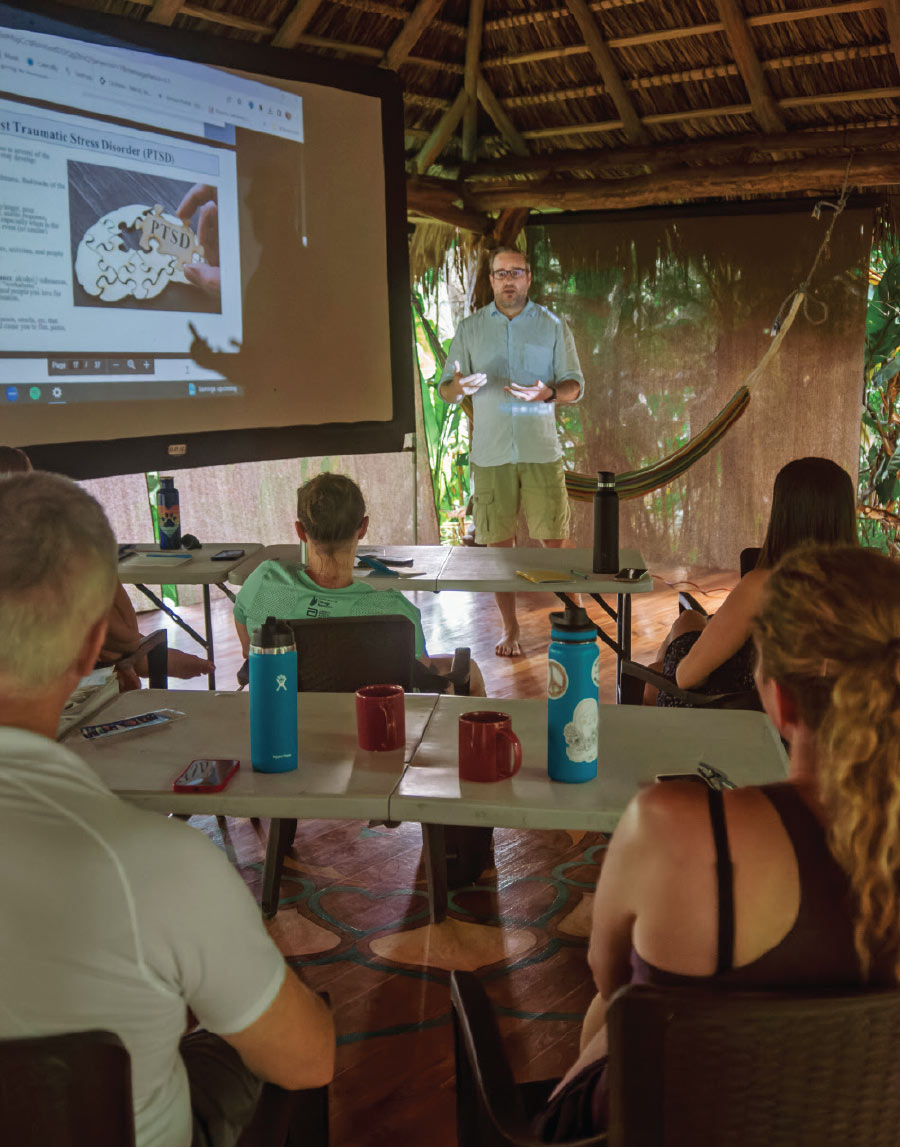

“Our events are designed to be simple, where you are not staring at tourists all day. You’re there to heal and learn how to better teach your body to deal with life’s challenges,” she concludes.
If you’re interested in learning more about the Pura Vida Wellness Retreats, visit www.puravidavetwellness.com



re you putting your health at risk by not having fun? According to medical and mental health professionals, the answer is yes! Despite this, many of us put fun at the bottom of our priorities, or don’t even consider it at all. But why?
We live in a world that teaches us to seek achievement and perpetuates the idea that personal value is tied to success. This construct sets up a pattern of behavior that has us very action and outcome oriented. It also reinforces a belief that time not spent constructively (in service or task completion) is time wasted…and wasting time is “bad.”
Furthermore, the idea of fun itself has been minimized. For most of us this started early on with childhood rules, such as, You have to clean your room first, then you can go out and play. As adults we’ve applied that rule to our to-do lists—fun isn’t allowed until the to-do list is done. The problem is, whether at home or at work, the to-do list never ends, landing us in a pattern of perpetual work and resistance to fun.
As a result, many of us spend time off from work trapped in anxiety and shame over all we have to do and how little we’ve gotten done. We retreat, we hide, we buffer, and we certainly don’t have any fun. This causes our physical and emotional wellbeing suffer, feeding into a spiral that pulls us down over time.
Neuroscience shows us that neurotransmitters are released based on the characteristics of photon (light) storms in the brain. Those photon storms are calibrated by what we focus on and think about. So, if we put all of our attention on the overwhelming to-do list or stressful events of the day, the resultant photon storm will create neurotransmitters that keep us in overwhelm and anxiety. However, when we engage in fun activities, our focus automatically shifts and neurotransmitters for higher-level emotions are released.
This is important to consider because the way we feel day in and day out (i.e., our mood) is the net result of those photon storms. Our average mood drives our actions and outcomes. It’s impossible to create lasting positive changes in our lives and physical health if our mood is consistently low.
So, if you know what you need to do to feel better or make progress toward a personal goal but you just can’t seem to take action consistently or struggle to sustain the progress you do make, this is why. The great news is, just by intentionally making time for fun, you can break this cycle, feel better and start making sustainable progress.
- Engaging in fun activities shifts your focus away from stress-inducing thoughts.
- This shift elevates your emotional energy, releasing feel-good hormones and decreasing stress hormones.
- Higher emotional energy frequencies compound with time and repeated exposure to fun activities, shifting your average mood to a higher level.
- Even after the fun activities end, the higher level mood lingers.
Here’s the really cool part—it doesn’t even matter what kind of fun you have, it all works! Is it fun for you to be outside walking, hiking or just relaxing? It will work! How about window-shopping or just wandering in public places? That will work, too! Quiet afternoons in coffee shops drinking lattes and people watching? That counts! Hanging out with enjoyable friends and family with no agenda? Great for your mood! Silly movies or comedy clubs that bring out the belly laughs? Excellent medicine! Creative activities like drawing, painting, sewing, singing or playing music? All powerful mood elevators!
The big question is, if it’s so simple, why don’t we do this more often? Well, in order for you to take advantage of this life-altering, health-improving hack, you must first give yourself permission to release the beliefs that to-do lists must be finished before fun and that time spent in fun activities is time wasted. These things are simply not true and will never help you accomplish more, improve your health or enhance your life.
Furthermore, because of the positive lingering effect that fun has on your nervous system, there are some really powerful secondary benefits that occur when fun is prioritized. For example, you become more motivated to tackle the old to-do list, work becomes more enjoyable because you are more resilient in the face of stress at work, and you begin compounding a positive state of wellbeing, therefore improving your health.
Ready to try out some “fun medicine” for yourself? Here are a few tips:
- Keep it simple: Pick a fun activity that is easy for you to do right now and doesn’t require a lot of effort to get started.
- Schedule it: Put a block on your calendar and reserve it for fun; don’t assume you’ll find time, because you won’t! Make the time now.
- Amp it up: Start with just one fun session a week and work your way toward one fun session per day. These sessions don’t have to be hours long, even 15 minutes has a lasting impact.
- Trust the process: Building a new habit of fun and experiencing the compounding positive impact fun creates doesn’t happen overnight, but it does happen with consistent commitment.
- Track your progress: Make a note daily or weekly of your mood, your weight, your blood pressure or whatever other aspect of your health you’re working to improve and notice how it changes for the better over time.
Our lives may be busy and unpredictable as veterinary professionals, but there is no reason why we can’t intentionally have fun along the way—our wellbeing depends on it!
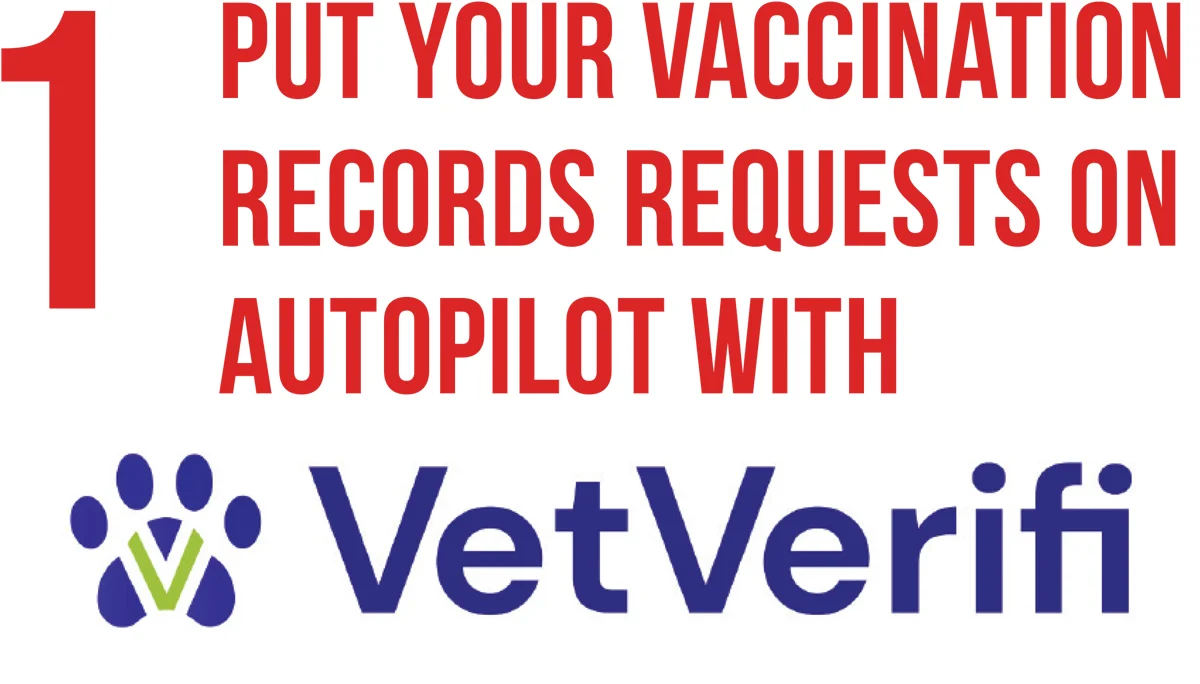
By providing a secure, automated way to fetch and share verified vaccination records in seconds, this service better connects vet clinics to pet services providers and cuts down on phone calls. www.vetverifi.com
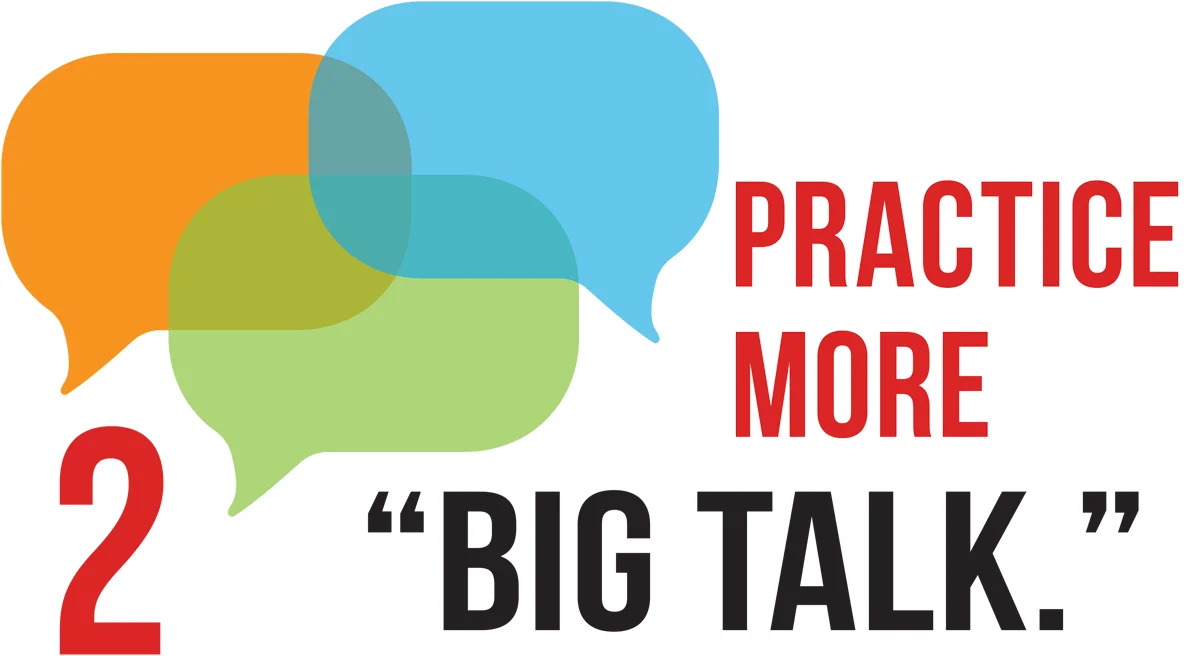
This refers to deepening connections through meaningful conversation. There are even products like conversation-starter games and apps to get those deep convos off the ground.
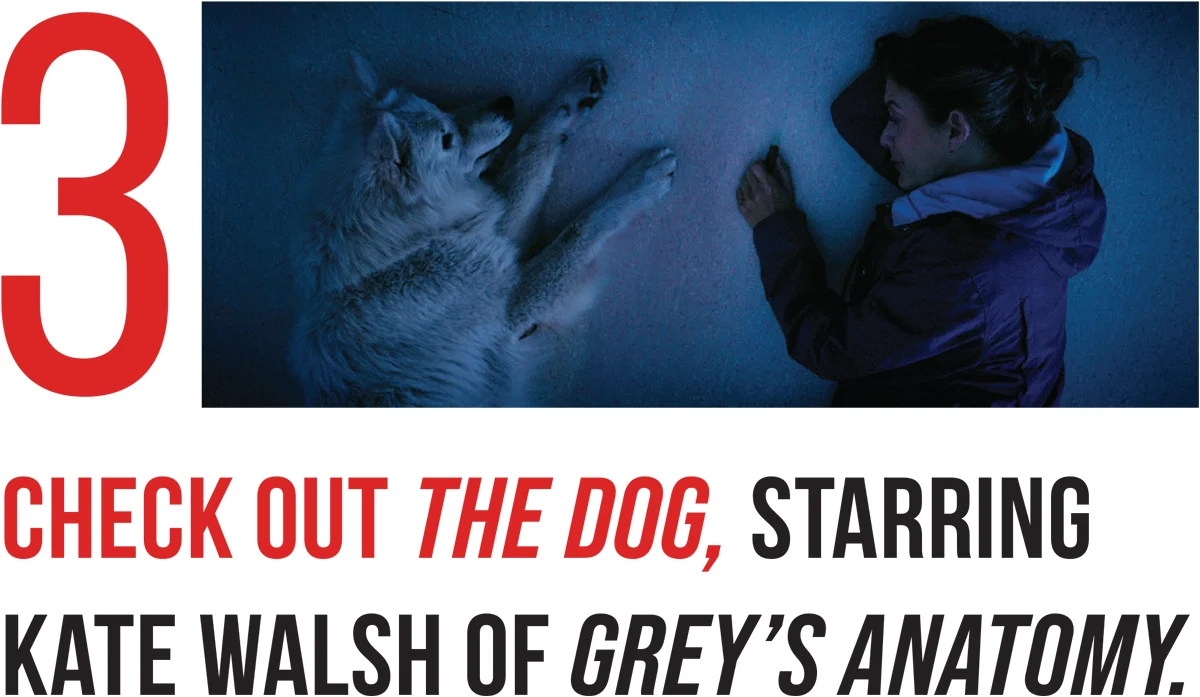
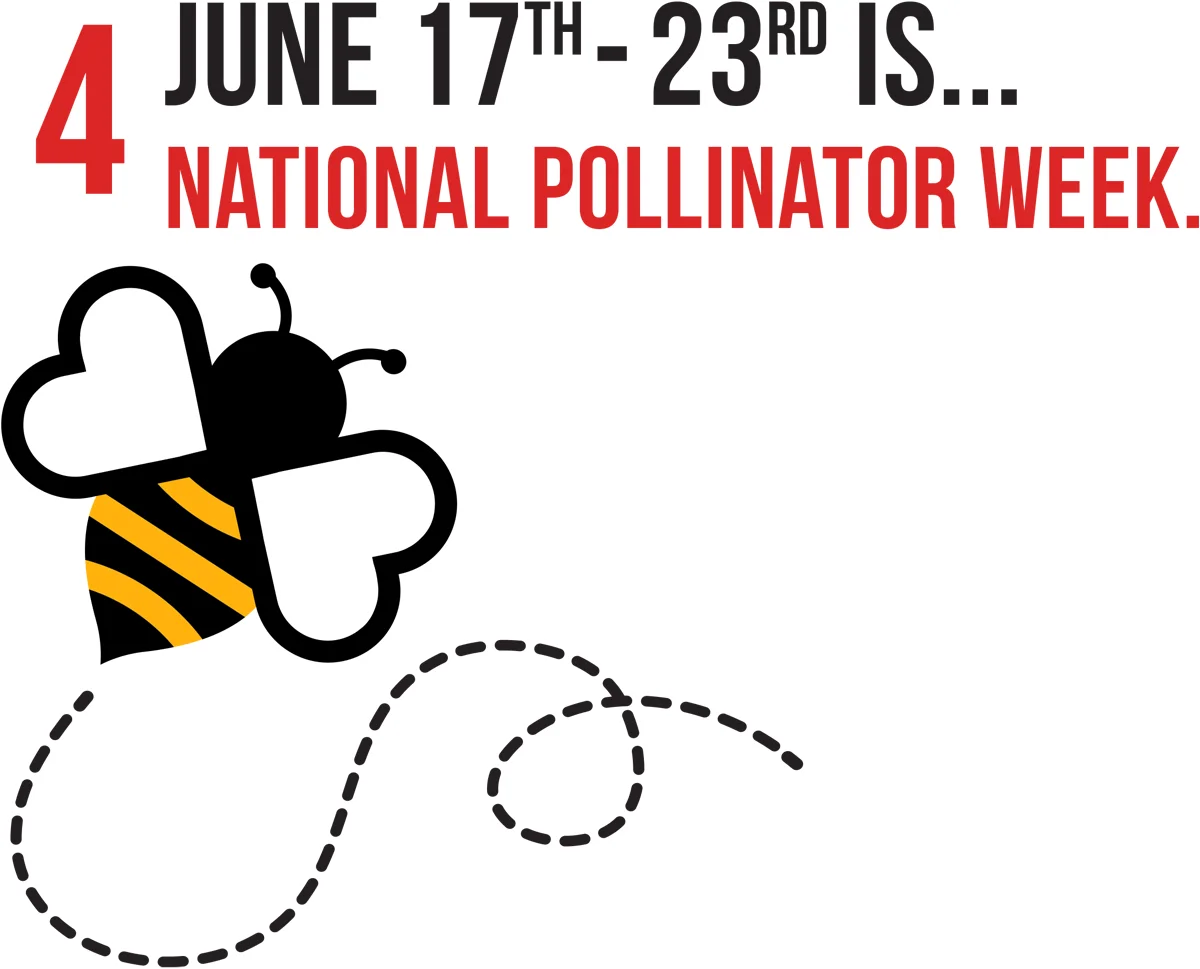
Do your part in keeping the circle of life rotating by planting some native flowering plants around your practice and home to attract our pollinating friends.
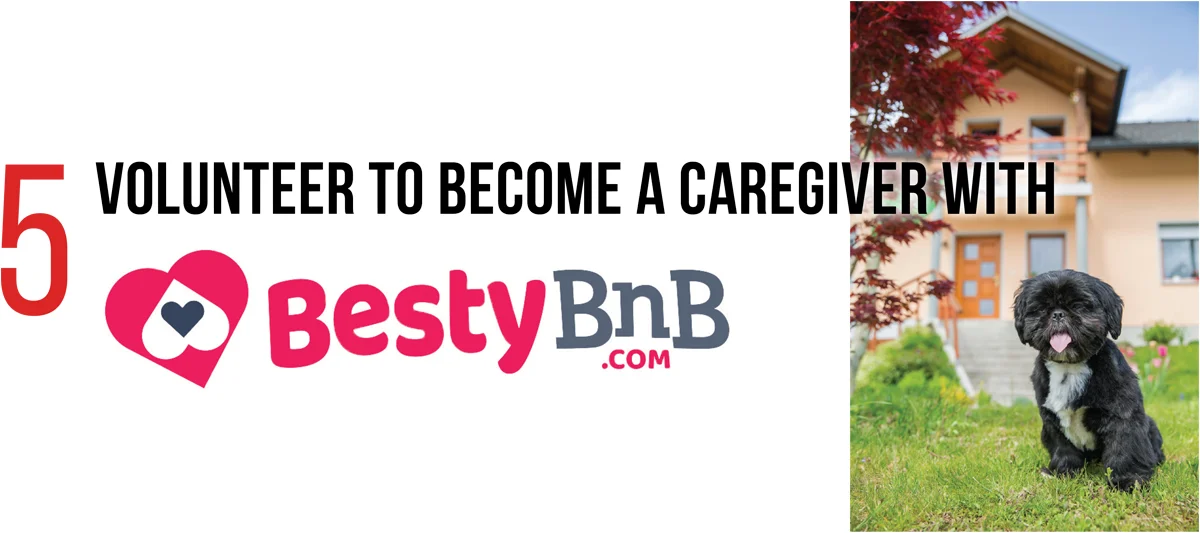
This organization creates crisis care and safety net pet programs to help animal welfare, domestic violence, houseless services and other social service agencies secure safe, temporary homes for pets during their owners’ time of crisis. www.mybestybnb.com


Budget-friendly recipes often rely on simple, accessible ingredients and prioritize minimizing waste in order to stretch your dollar further. Think one-pot meals and repurposed leftovers!
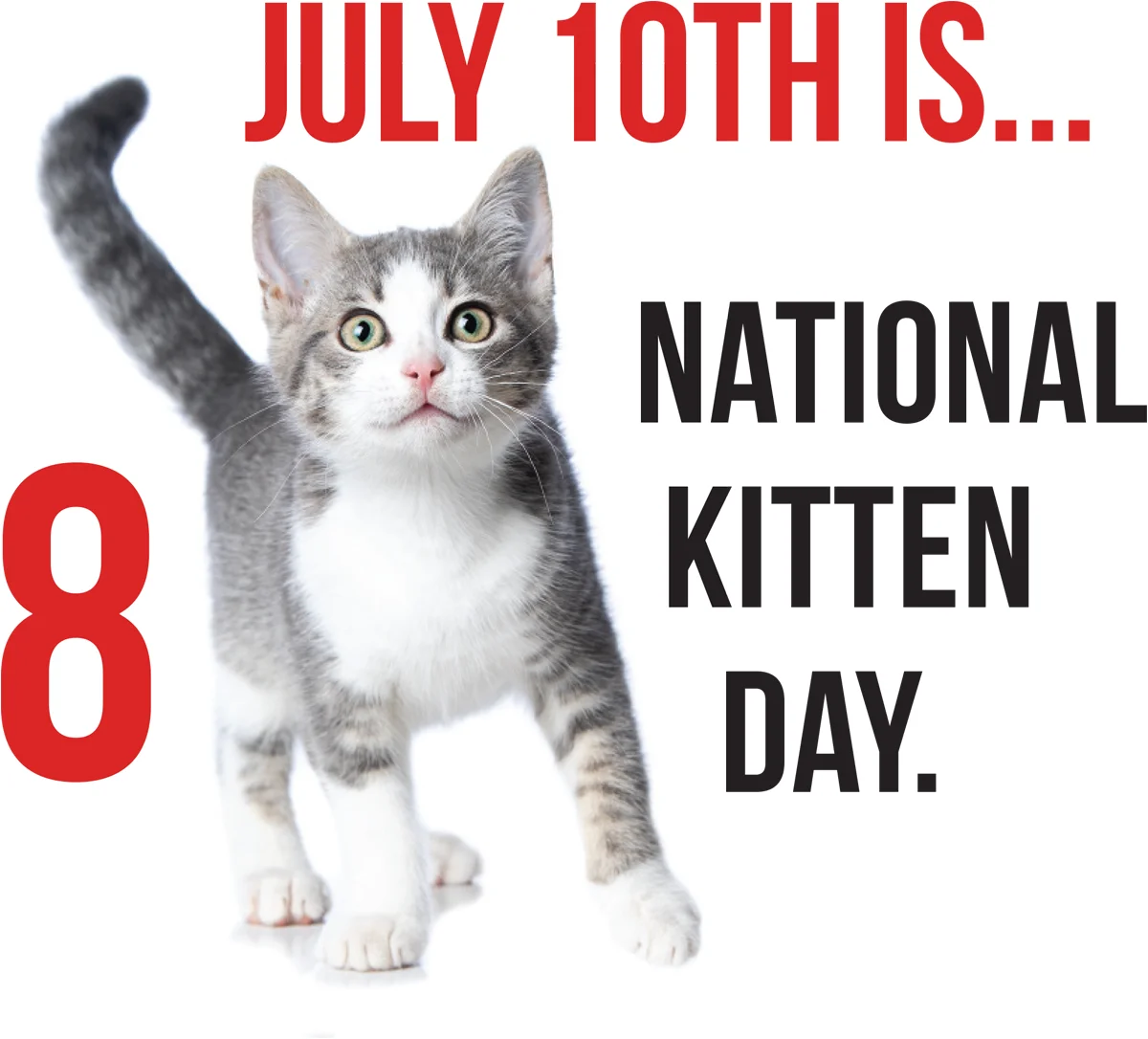
It’s a good time to remind your new-kitten clients of your spay/neuter services and any upcoming clinics or specials that they can book in advance.

This practical guide to performing a necropsy, understanding anatomical connections and underlying pathological findings by Linda Morrison and Sionagh Smith is a useful resource for undergraduates, qualified vets and pathologists.

Taking place July 25th-29th, the 10th World Congress of Veterinary Dermatology has something for everyone, from state-of-the-art presentations to species-specific streams. vetdermboston.com



2 leading trade magazines for the pet professional in your life with all the content to assist them in keeping your pet healthy, happy and beautiful.
online or in print at www.barkleigh.com
Facebook.com/
barkleigh.prod
Twitter:
@barkleighinc

Thanks for reading our June/July 2024 issue!
